Throughout history, mankind has been captivated by the vastness of the cosmos. From ancient times, when people sought to decipher the messages of the gods in the constellation of stars, to the Renaissance era, when great minds endeavored to unravel the mysteries of the universe, the allure of the celestial sphere has remained constant. While not everyone can journey into outer space and explore the depths of the cosmos, anyone can cast their gaze skyward and marvel at the beauty of the Milky Way. To aid you in this cosmic quest, we have compiled a list of the most awe-inspiring locations on Earth for observing comets and our galaxy’s magnificent display.
A study published in the journal Science Advances in 2016 revealed that a significant number of individuals in the United States, Europe, and the Commonwealth of Independent States are unable to observe stars in the night sky due to the prevalence of light pollution. However, there is hope. In 1988, a group of astronomers established the International Dark-Sky Association (IDA), a non-profit organization dedicated to addressing this issue. Each year, the IDA identifies locations that are ideal for stargazing and actively works to combat excessive light pollution. Furthermore, the IDA is actively involved in the creation of observation sites for amateur astronomers. The data provided by the IDA in this article guarantees an outstanding stargazing experience in all the recommended locations!
1. Westhavelland, Germany
Westhavelland, Germany is an excellent destination for nature lovers. Located in the state of Brandenburg, it offers breathtaking landscapes and diverse wildlife. The region is known for its dark skies, making it a popular spot for stargazing. In fact, it has been designated as an International Dark Sky Reserve, ensuring minimal light pollution.
Visitors to Westhavelland can explore the vast wetlands and meadows, which are home to a wide variety of plant and animal species. The area is particularly renowned for its birdwatching opportunities, with over 200 species of birds recorded in the region. Bird enthusiasts can spot rare species such as the white-tailed eagle and the black stork.
The natural beauty of Westhavelland is best experienced through hiking or cycling. There are numerous trails and bike paths that wind through the countryside, allowing visitors to immerse themselves in the stunning scenery. Along the way, you may come across charming villages, historic landmarks, and tranquil lakes.
For those interested in history and culture, Westhavelland has plenty to offer as well. The region is dotted with medieval castles, churches, and museums that provide insights into the area’s rich heritage. One notable attraction is the Havelberg Cathedral, a grand Romanesque-style church that dates back to the 12th century.
Whether you’re a nature enthusiast or a history buff, Westhavelland, Germany is a destination that shouldn’t be missed. With its pristine landscapes, abundant wildlife, and cultural treasures, it offers something for everyone. Plan your visit and get ready for an unforgettable experience.
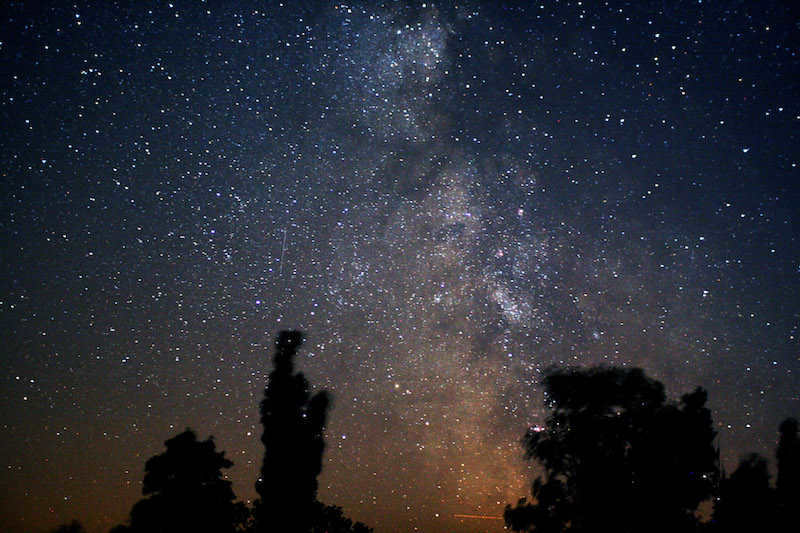
The Westhavelland Nature Park, located approximately one hundred kilometers away from Berlin, is widely recognized in Germany as the Star Park. It has gained a reputation for being an outstanding destination for stargazing during the autumn season. The skies are remarkably clear and free of clouds, allowing for optimal stargazing experiences. Additionally, the park is home to a variety of migratory birds whose songs can be heard echoing through the night. The weather during autumn is ideal for nighttime walks, making it an excellent time to immerse oneself in the natural beauty and tranquility of the park.
Andrea Henel, the director of the local planetarium, is not only a prominent figure in the field but also a member of the International Dark-Sky Association (IDA). She frequently accompanies tourists at the telescope, sharing her expertise and passion for astronomy. Henel has dedicated significant effort to eliminate artificial light pollution in the skies above Westhavelland, leading to the park’s inclusion in the IDA’s prestigious list. She strongly supports the belief that autumn provides the most enchanting atmosphere for appreciating both wildlife and the mesmerizing allure of the stars.
From mid-May to late July, the Westhavelland reserve attracts professional astronomers who are drawn to its dark and clear skies. During the new moon phase, they spend their nights observing the stars from midnight until dawn. This is a unique opportunity to witness phenomena such as the zodiacal light and antiscia.
2. Kerry, Ireland
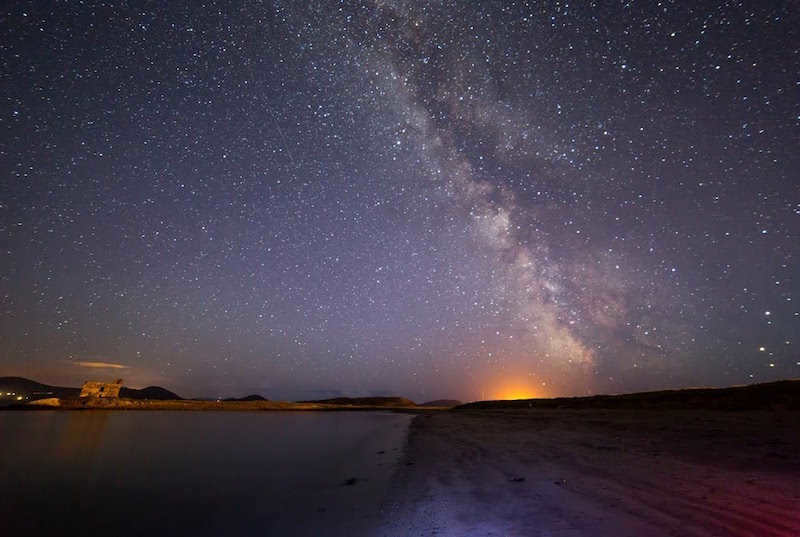
The Kerry International Dark Sky Reserve, also known as the Dark Sky National Park in Kerry, is a relatively new addition to the list of the best places on the planet for stargazing. This reserve covers an impressive area of over seven hundred square kilometers on the Iver Peninsula and benefits from its location, being protected from light pollution by the Atlantic Ocean and a mountain range.
When the night skies are clear, visitors to the Dark Sky National Park in Kerry can witness breathtaking views of the Milky Way, large star clusters, nebulae, and even meteors. Additionally, on rare occasions, the Andromeda Galaxy, which is located 2.5 million light years away from Earth, can be seen. Andromeda is the closest neighbor to our own Milky Way galaxy, making this a truly unique and special sight.
In addition to its natural beauty, the National Park in Kerry has the added benefit of having a well-developed infrastructure. With a population of approximately four thousand residents, every area of the park is easily accessible by car. The park boasts paved roads, convenient stores, and a variety of hotels. Visitors can also find a map of the park’s most notable locations on the official website.
3. Pic du Midi, Pyrenees, France
The third destination on our list is the majestic Pic du Midi in the Pyrenees mountain range of France. Known for its stunning beauty and breathtaking views, this mountain peak is a must-visit for any nature lover or adventurer. With its towering height and panoramic vistas, Pic du Midi offers a unique experience for those seeking a taste of the great outdoors. Whether you’re an avid hiker or simply want to soak in the natural beauty, a trip to Pic du Midi is sure to be a memorable one. Don’t miss the opportunity to explore this natural wonder and take in the awe-inspiring landscapes that the Pyrenees have to offer.
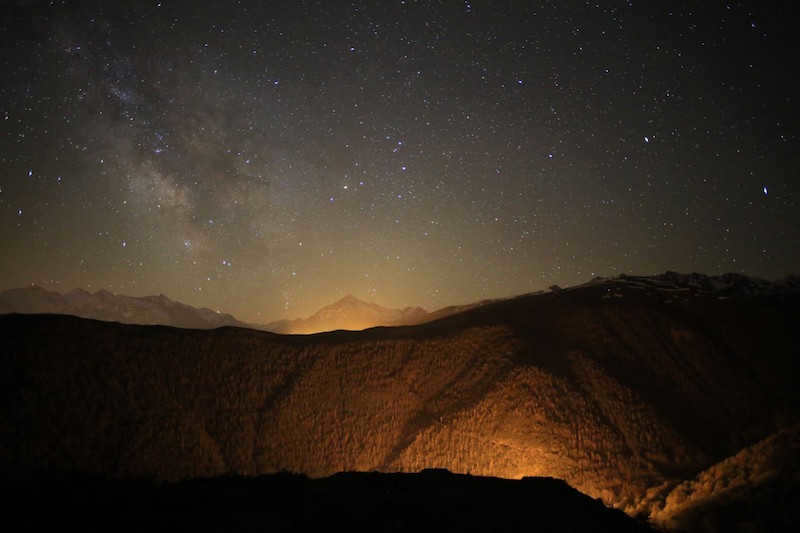
Located in the French Pyrenees, close to the border with Italy, lies the expansive Pic du Midi Nature Park, also known as the Pic du Midi International Dark Sky Reserve. The park is home to the famous observatory situated atop the Midi de Bigorre mountain, which stands at an impressive elevation of 2877 meters. Each year, over a hundred thousand tourists flock to the reserve and observatory to marvel at the pristine night sky.
This unique location is shielded from light pollution, smoke clouds, and harmful emissions from industrial facilities, ensuring a clear and unobstructed view of the heavens. Encompassing approximately three thousand square kilometers, the park stretches along a mountain range and encompasses the Pyrenees-Perdue, a majestic limestone mountain recognized as a UNESCO World Heritage Site.
The observatory, which was constructed in 1881 and has undergone multiple expansions and renovations, is the most renowned destination for stargazing. It was within this establishment that the very first daytime observation of stars being obscured by asteroid coverage occurred. The interior of the observatory houses professional equipment such as refractors, telescopes, and coronographs. Additionally, it is home to one of the world’s highest museums, where visitors can explore exhibits detailing the rich history of astronomy.
From the observatory’s location, one can witness the ethereal beauty of the Milky Way, numerous constellations, and the zodiacal light. Visitors have the opportunity to engage in independent stargazing or take part in guided tours. The most popular excursion program is aptly named “Night at the Summit,” which concludes with an invitation for tourists to view the renowned two-meter Bernard Lyot telescope – the largest telescope in all of France.
Due to its location at the summit of a snow-covered mountain, visitors to the Pic du Midi Observatory have the unique opportunity to combine stargazing with winter sports. The observatory can be accessed via a cable car, which is also used by athletes for skiing and snowboarding. In order to attract tourists, the management of the observatory offers complimentary access to the slopes of the Midi de Bigorre for extreme astronomers.
4. Brecon Beacons, United Kingdom
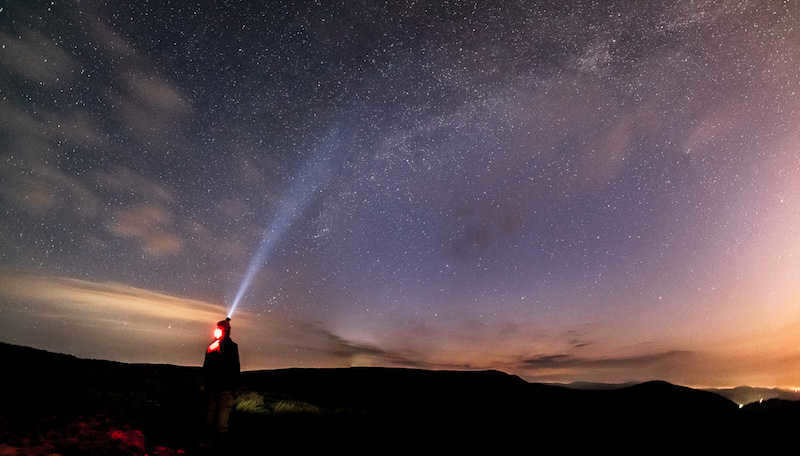
The Brecon Beacons National Park in southern Wales, known as the Brecon Beacons National Park, has gained a well-deserved reputation as a haven for stargazers. It offers the unique opportunity to observe Mars and Jupiter with the naked eye while strolling through the prairies at night. Additionally, through a telescope, you can clearly see Galileo’s satellites: Io, Europa, Ganymede, and Callisto. These satellites were first discovered by Galileo in 1609 using his groundbreaking telescope.
5. Nambi Rand, Namibia
Nambi-Rand Nature Reserve is situated on the eastern edge of the Namib Desert, which is renowned as the oldest desert on Earth. The arid climate in this region ensures exceptional visibility, with the Namib’s sky being clear and pitch black. Against this backdrop, astronomical objects stand out in all their glory, and a multitude of stars can be easily spotted with the naked eye.
At Nambi Rand, visitors have the opportunity to observe various celestial wonders using telescopes. The Milky Way, the Magellanic Clouds, the zodiacal light, planets, and antiscia are among the fascinating sights that can be enjoyed here. Tourists can either bring their own equipment or rent it directly from the reserve.
The local hotel complex “Sossusvlei Desert Lodge” offers its visitors more than just cozy accommodations – it also provides them with a state-of-the-art twelve-inch telescope. Guests have the unique opportunity to explore the night sky with the help of a knowledgeable astronomer who is available on-site. For those staying at the Wolwedans campground, which is nestled in the heart of the reserve, there are portable telescopes available for rent. English-speaking guides are also on hand to assist guests in getting the most out of their stargazing experience.
6. Aoraki Mackenzie, New Zealand
Aoraki Mackenzie, located in New Zealand, is an exceptional destination for nature enthusiasts. This stunning location offers breathtaking views and a unique experience for visitors. With its majestic mountains, crystal clear lakes, and vast open spaces, Aoraki Mackenzie is a paradise for outdoor activities and exploration.
The Aoraki Mackenzie region is home to the highest peak in New Zealand, Mount Cook, which attracts mountaineers from all over the world. The surrounding area is also known for its dark sky reserve, making it an ideal spot for stargazing and astrophotography.
In addition to its natural beauty, Aoraki Mackenzie offers a range of activities for visitors to enjoy. From hiking and mountain biking to boating and fishing, there is something for everyone. The region is also home to several world-class observatories, where visitors can learn about the universe and indulge in the wonders of space.
Whether you’re seeking adventure or simply looking to relax and take in the breathtaking scenery, Aoraki Mackenzie has it all. Plan your visit today and discover the natural wonders of this incredible destination.
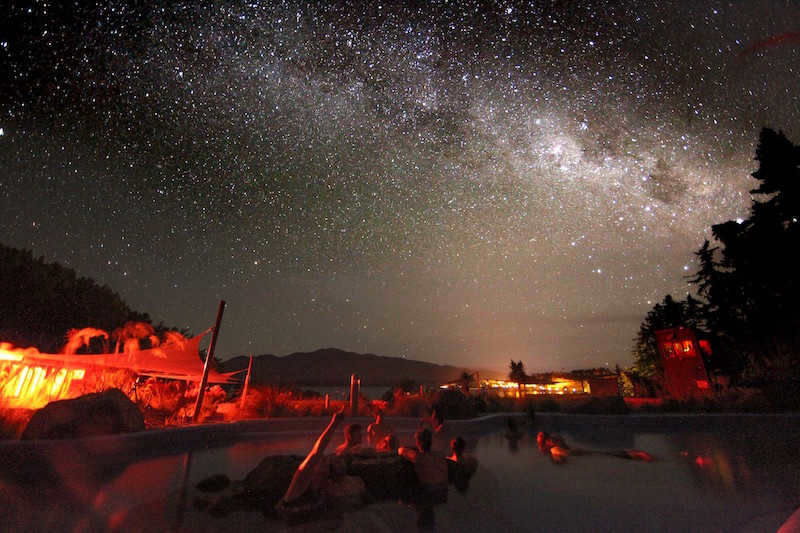
The Aoraki Mackenzie National Park, also known as the Aoraki Mackenzie International Dark Sky Reserve, is renowned for its exceptional opportunities to observe the night sky, particularly celestial objects in the southern hemisphere. This location offers breathtaking views of the mesmerizing Southern Lights, also known as the Aurora Australis, which are unique to the southern region. Additionally, stargazers can easily spot the iconic Southern Cross constellation and Sigma Octanta, the star closest to the South Pole, with the naked eye.
The national park encompasses a vast expanse: nearly 4,500 square kilometers. Situated on the South Island of New Zealand, within the local Alps region, it boasts popular routes for stargazers including Lake Tekapo and the ascent of Mount Cook, which offers breathtaking vistas of both the celestial heavens and the surrounding natural beauty.
The optimal time for observing the sky is during moonless nights. As the full moon wanes, the sky becomes luminous and “transparent,” resembling daylight. This presents an exceptional opportunity to witness the expansive Milky Way stretching across the entire horizon.
7 Exmoor, UK
Exmoor, located in the United Kingdom, is a unique destination that offers a wide range of experiences for visitors. From its stunning landscapes to its rich cultural heritage, there is something for everyone to enjoy in this beautiful region.
One of the highlights of Exmoor is its diverse wildlife. The area is home to a variety of species, including the iconic Exmoor pony, red deer, and rare birds. Visitors can explore the many walking trails and nature reserves to get a closer look at these incredible creatures in their natural habitat.
In addition to its natural beauty, Exmoor also has a rich history and heritage. The region is dotted with ancient archaeological sites, including stone circles and hillforts. History enthusiasts can delve into the past by visiting the area’s many museums and heritage sites, which offer a fascinating insight into Exmoor’s past.
For those seeking adventure, Exmoor has plenty to offer. The region is a popular destination for outdoor activities such as hiking, cycling, and horse riding. With its diverse landscapes, including rugged moorland, deep valleys, and dramatic coastline, there are endless opportunities for exploration and adventure.
Food and drink lovers will also be in for a treat in Exmoor. The region is known for its delicious local produce, including Exmoor lamb, venison, and traditional ciders. Visitors can sample these culinary delights at the many local pubs, restaurants, and cafes scattered throughout the region.
Whether you’re seeking tranquility in nature, a taste of history, or an adrenaline-filled adventure, Exmoor has something for everyone. Plan your visit to this unique destination and discover all that it has to offer.
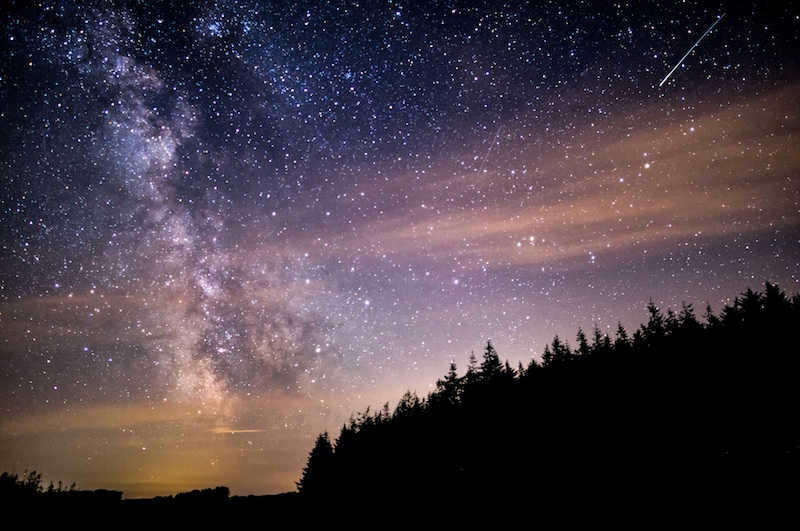
The first dark sky reserve in Europe was Exmoor National Park (Exmoor National Park). Exmoor National Park was granted this prestigious designation in 2011. On clear nights, you can observe and identify a staggering three thousand stars here! Many astronomers hope to discover a new celestial body in this area, as the sky is incredibly filled with stars. Perhaps you will be fortunate enough to make a groundbreaking discovery?
The optimal time to visit Exmoor is from early March to late April. During this period, the skies above the United Kingdom are exceptionally dark and clear. In late summer, there is also a possibility of witnessing meteors – the blazing descent of various celestial objects accompanied by vibrant, multicolored flashes.
One of the best spots to enjoy a panoramic view is Lake Wimbleball. Situated in an elevated position, it offers unobstructed vistas of the sky, with no residential areas or settlements nearby to create smog or light pollution. Surrounded by untouched nature, the area is filled with the melodic songs of birds and the gentle rustling of trees, making it a truly beautiful sight to behold!
8. Mont-Megantic, Canada
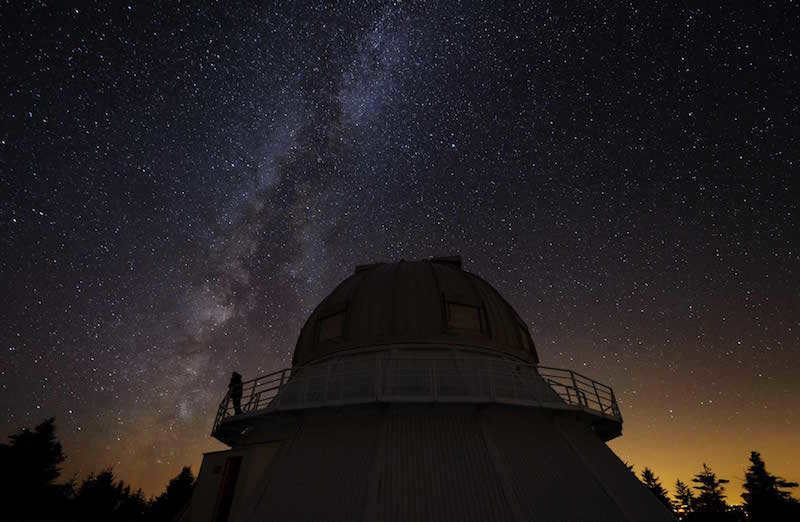
The Mont-Mégantic Observatory, also known as the Mont-Mégantic International Sky Reserve, is the largest observatory in eastern Canada and boasts the largest telescope in eastern North America. Established in 1978, this observatory has steadily expanded its technical capabilities and is currently overseen by three Canadian universities.
Each year, approximately fifty thousand astronomers visit this site. Both professionals and amateurs alike flock to Mont-Mégantic throughout the year, and for good reason: the Milky Way can be seen with the naked eye. Even without additional equipment, visitors can observe shooting stars, planets, satellites, the Andromeda Galaxy, and the Northern Lights.
Using the telescope allows for the observation of various astronomical phenomena, such as supernovae flares, lunar craters, planetary nebulae, star clusters of different sizes, and interstellar clouds. The observatory grounds are equipped with a wide range of instruments, including telescopes that are capable of providing detailed views of the Moon’s surface.
9. Grand Canyon, Arizona, USA
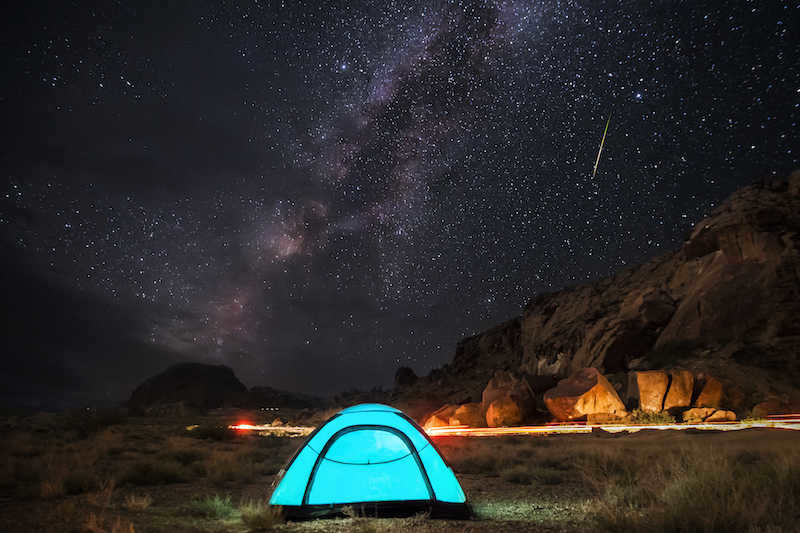
Grand Canyon National Park, one of the most renowned national parks globally, draws in more than five million visitors annually! The photographs of the night sky above the Grand Canyon are strikingly vivid and breathtaking. It’s no surprise that every astronomy enthusiast aspires to visit Arizona and capture their own experience of observing the local celestial sphere.
On February 19th, the establishment of the national park is commemorated with an eight-day celebration! During this period, numerous astronomers gather here, and various free events related to stargazing are organized. Tourists have the opportunity to attend lectures about the stars, gaze through a telescope, rent equipment, or engage in a friendly barter system.
The Grand Canyon became a member of the IDA in 2019. It took a span of three years to update the lighting and observation platforms. Experts are forecasting that at this pace, tourists will have the opportunity to witness 90% of the canyon’s stars within a few years.
10. Mayland, North Carolina, USA
Mayland Earth to Sky Park & Bare Dark Sky Observatory. A new observatory with a retractable roof was unveiled at Mayland State College in 2017. Situated at an altitude of approximately eight hundred feet, it offers panoramic views in every direction.
Visitors to the observatory are equipped with a 34-inch telescope and other optical instruments. The Milky Way is clearly visible from this location, and on clear evenings, certain stars and celestial objects can be seen even without the aid of a telescope. Entrance to the observatory is free, enabling you to observe the night sky, capture photographs, and if you are a professional, conduct lectures.
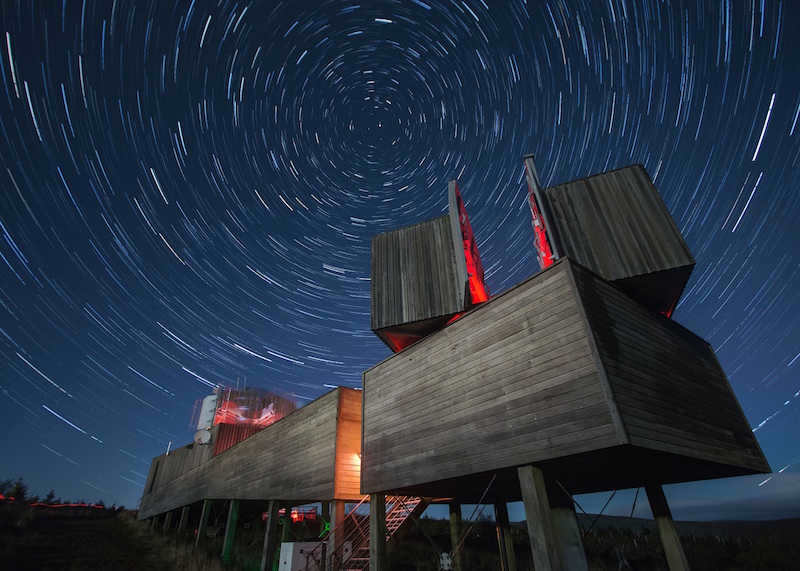
The wooden Kielder Observatory, located in the Northumberland National Park, is a truly unique structure in terms of its architecture and design. Situated in the midst of untouched nature, it is approximately 30 km away from the nearest village, Bellingham.
Inside the observatory, there are two powerful telescopes: one with a 20-inch model and another with a 14-inch model. Additionally, there is space available for amateur astronomers to bring their own portable equipment. The facility is completely self-sufficient, utilizing a wind turbine for electricity and solar panels on the roof. The stationary telescopes are strategically placed on rotating towers, allowing for a full 360-degree view.
Kielder is renowned for its exceptional clear skies, making it truly one of the world’s leading destinations for stargazing. When the weather is clear, visitors are treated to the spectacular sight of over seven thousand celestial objects. Even without the aid of a telescope, one can marvel at distant luminaries such as the Andromeda Galaxy during the winter months. In the summer, the Milky Way, comets, and meteors light up the night sky.
In addition to the breathtaking views, Kielder also offers a variety of educational events, including regular thematic seminars and lectures. These events are typically free or require only a small donation. The maintenance of the station is carried out by dedicated volunteers, and all proceeds go towards charitable causes.
12. Chaco Canyon, New Mexico, USA
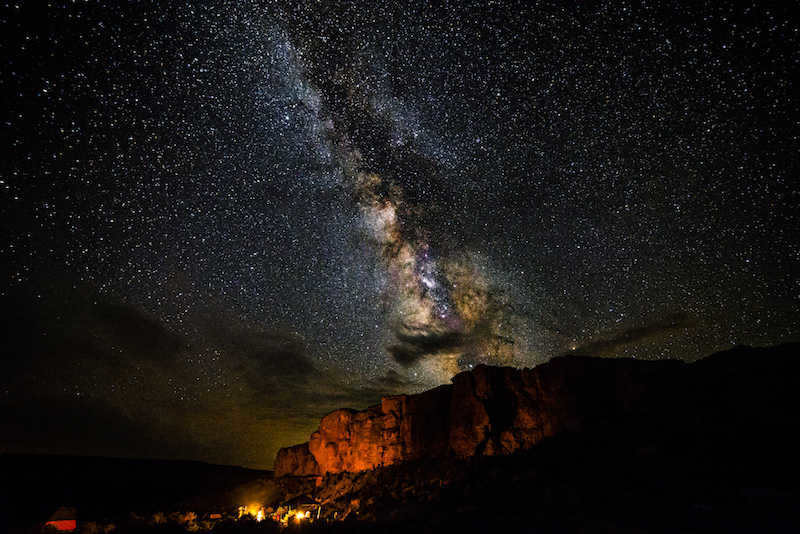
The Chaco Culture National Historical Park, also known as the Chaco Culture National Historical Park, is situated in New Mexico, nestled between the bustling cities of Albuquerque and Farmington. This remarkable preserve is centered around a breathtaking canyon, which is adorned with ancient Anasazi ruins. Chaco serves as a pivotal cultural and historical landmark, attracting regular archaeological excavations. Travelers who venture here for stargazing will not only be treated to celestial wonders but will also have the opportunity to immerse themselves in the rich Anasazi customs and heritage. If you decide to hire a guide, be prepared to receive an informative lecture on the fascinating Anasazi culture.
13. Death Valley, California, USA
Death Valley, located in California, USA, is a unique and fascinating destination for travelers. With its extreme heat and arid landscape, it is known as the hottest and driest place in North America.
The valley is home to a variety of unique geological features, including salt flats, sand dunes, and colorful rock formations. Visitors can explore these natural wonders by hiking or driving through the valley.
Despite its harsh conditions, Death Valley is also home to a surprising amount of wildlife. Desert bighorn sheep, coyotes, and roadrunners can all be spotted in the area.
For those brave enough to endure the extreme temperatures, Death Valley offers stunning sunsets and expansive starry skies that are truly breathtaking. It is a destination unlike any other and is sure to leave a lasting impression on any visitor.
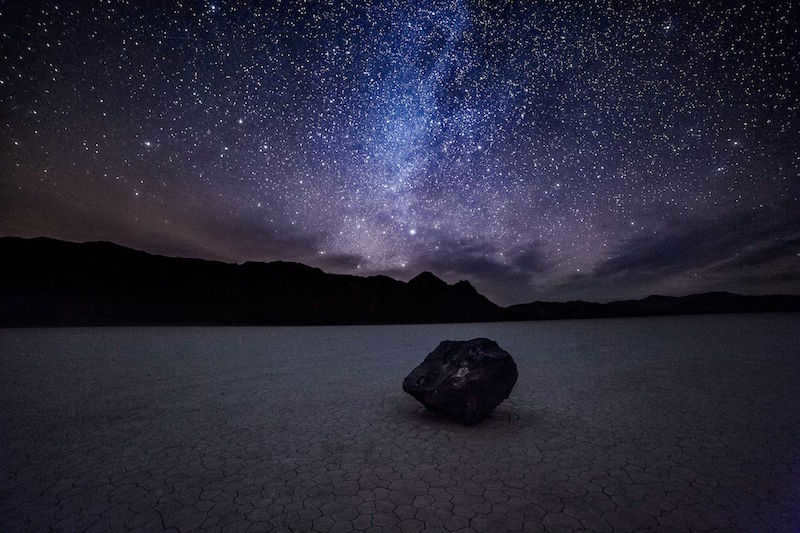
Death Valley National Park, known for its stunning landscapes, is also renowned as the ultimate destination for stargazing enthusiasts. Spanning nearly fourteen thousand kilometers, this famous national park offers astronomers an expansive area to observe the night sky. Thanks to its dry climate, there is minimal interference from evaporation, fog, or high clouds, ensuring clear and unobstructed views.
Despite being located relatively close to major cities like Las Vegas (190 km) and Los Angeles (460 km), Death Valley remains unaffected by light pollution. It regularly hosts gatherings of astronomers, and from November to April, the park management arranges guided tours and informative lectures for visitors interested in exploring the wonders of the cosmos.
The park provides options for overnight stays or extended stays. Our top recommendation for accommodation is the Mahogany Flat Campground, which is situated on top of Telescope Peak, the tallest point in the valley at an elevation of 2,499 meters above sea level. This location offers breathtaking views and ample space for setting up astronomy equipment.
14. Big Bend, Texas, USA
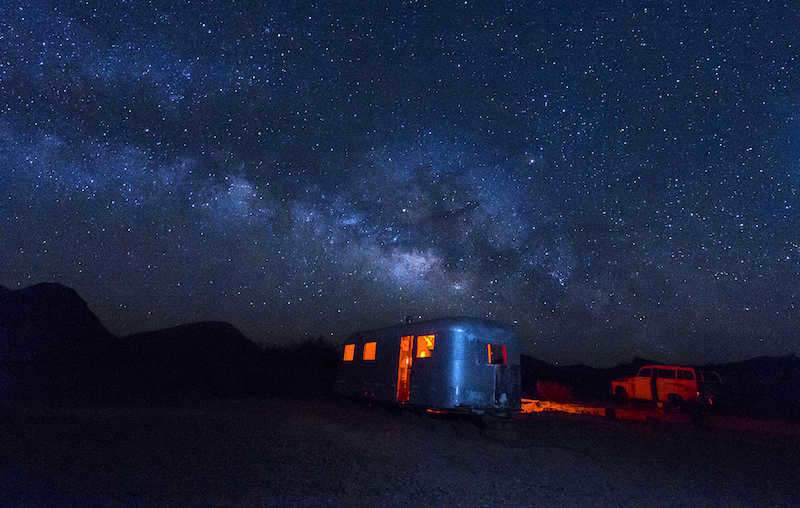
Located along the Rio Grande River, Big Bend National Park is a popular destination for tourists due to its stunning landscapes, vibrant cactus blooms, and most importantly, its incredibly clear skies. As the southernmost International Dark Sky Association (IDA) reserve in the Northern Hemisphere, it serves as an unofficial boundary where one can witness a multitude of fascinating celestial objects.
From this location, you can catch a glimpse of the Southern Cross and Sigma Octanthus constellations, and if the night sky is clear, you may even be able to spot the Andromeda Galaxy. In total, there are approximately two thousand visible stars, meteors, and planets in the sky above the park, including Mercury, Venus, Mars, Jupiter, and Saturn. The best vantage point to admire this celestial beauty is the Chisos Basin Campground, situated at an impressive altitude of 1,600 meters and offering breathtaking views of the Chisos mountain range.
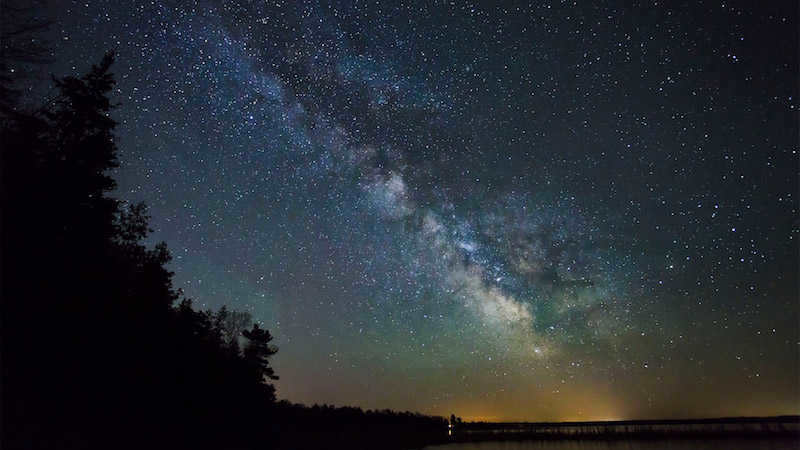
Headlands National Park, also known as Headlands International Dark Sky Park, is a 240-hectare forest that serves as a sanctuary against light pollution and urban smog. It aims to protect the park’s pristine natural environment and provide a unique experience for visitors. To attract tourists, the park organizes monthly astronomy lectures and workshops. Additionally, for those interested in culture and history, there is a separate program that explores the Native North American beliefs surrounding the stars.
These monthly gatherings are completely free of charge and take place regardless of the weather conditions. Thanks to the area’s consistently clear skies, stargazing is possible even in inclement weather, such as snow or rain. One of the highlights of Headlands National Park is the annual meteor showers. Some notable examples include the Quadrantids in January, the Perseids in August, and the Geminids in December. Witnessing the mesmerizing reflections of these meteor showers on the waters of Lake Michigan is truly a once-in-a-lifetime experience!
16. Jigoa, Ohio, USA
The Jigoa County Observatory is a well-known attraction in the area. Spanning across a thousand acres, this observatory park offers breathtaking views of the Milky Way, lunar craters, constellations, and nebulae. Equipped with state-of-the-art technology, the observatory and planetarium provide visitors with an immersive experience. Additionally, the park also provides designated areas for visitors to set up their own portable telescopes. Recently, in 2017, the astronomy station underwent renovations and received an upgrade with the addition of a 36-inch telescope.
17. Hortobágy, Hungary
Hortobágy, located in Hungary, is a unique destination that offers visitors a chance to experience the beauty of the Puszta region. This vast area of grassland is home to a diverse range of flora and fauna, making it a haven for nature lovers.
One of the highlights of Hortobágy is its traditional Hungarian horse shows. These displays showcase the incredible skill and agility of the Hungarian cowboys, known as csikós. Visitors can watch as the csikós perform daring stunts on horseback, such as standing on the saddle or jumping through hoops.
In addition to the horse shows, Hortobágy also offers a variety of other activities for visitors to enjoy. Guests can explore the vast grasslands on horseback or take a guided tour in a traditional horse-drawn carriage. The area is also home to several bird species, making it a popular spot for bird watching.
For those interested in history and culture, Hortobágy has plenty to offer. The region is known for its traditional Hungarian folklore and customs, which are celebrated during various festivals and events throughout the year. Visitors can learn about the local traditions and even participate in activities such as traditional dancing or crafts.
Overall, Hortobágy is a unique destination that offers a combination of natural beauty, cultural experiences, and exciting activities. Whether you’re interested in exploring the grasslands, watching the horse shows, or immersing yourself in Hungarian culture, Hortobágy has something for everyone.
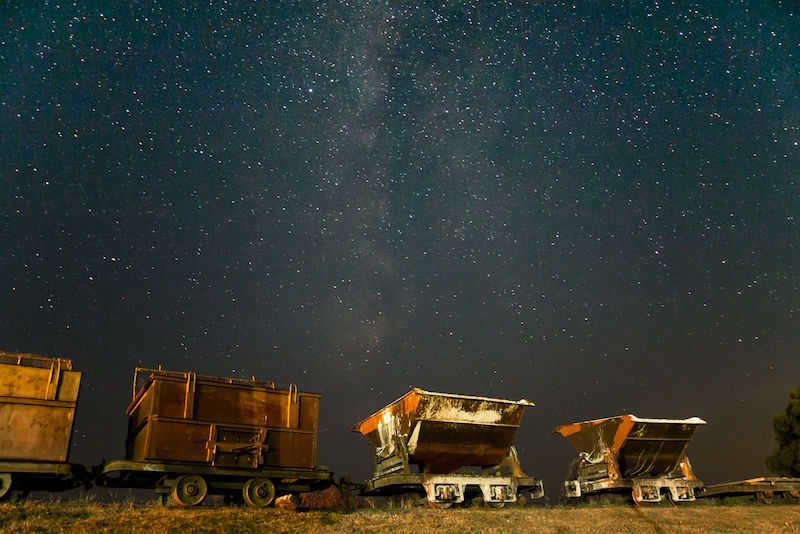
Hortobágy National Park (also known as Hortobágy) is home to a stunningly clear sky, thanks to a successful local conservation campaign. The park’s commitment to preserving the natural environment has created a sanctuary for rare insects and birds, making it imperative to avoid artificial lighting. The use of lanterns in the park would disturb the local wildlife, interfering with their ability to navigate, build homes, and ultimately reproduce.
In addition to its dedication to preservation, Hortobágy National Park offers other fascinating attractions. The park is home to the Nine-Arrow Bridge, one of Hungary’s longest bridges, which has been recognized as a UNESCO World Heritage Site. Visitors can also explore several museums within the park that showcase the local life and culture.
Incidentally, the magnificence of the sky over Hortobágy is an essential element of the region’s heritage. The park’s territories are partially possessed by 200 herding families. Their predecessors navigated by the constellations, which guided them and indicated the most suitable grazing areas. Present-day shepherds have upheld the traditions of old and possess a wealth of knowledge about the celestial bodies and other nocturnal phenomena.
18. Clayton Lake, New Mexico, USA.
Clayton Lake, located in New Mexico, USA, is a popular destination for outdoor enthusiasts and nature lovers. It offers a wide range of recreational activities, including fishing, boating, and camping. The lake is known for its scenic beauty and tranquil atmosphere, making it the perfect getaway for those seeking a peaceful escape from the hustle and bustle of city life. In addition to its natural beauty, Clayton Lake also has a rich cultural history, with several archaeological sites and ancient petroglyphs scattered throughout the area. Visitors can explore these sites and learn about the indigenous peoples who once inhabited the region. Whether you’re looking to relax by the water, explore the lake’s surroundings, or delve into its history, Clayton Lake has something for everyone.
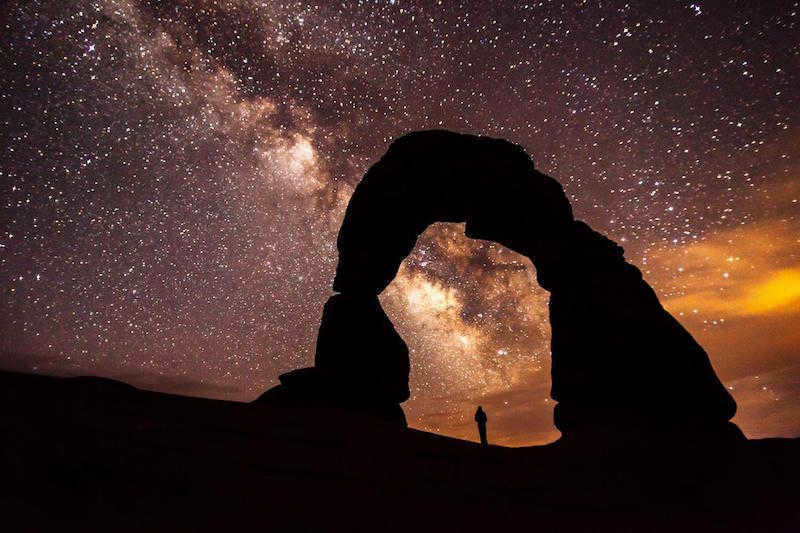
Experience guided tours of dinosaur tracks during the day and observe the captivating night sky at Clayton Lake State Park. Nestled within Clayton Lake State Park, this destination offers some of the darkest skies in the country, providing an ideal setting for stargazing without the need for a telescope.
However, if you do wish to peer through a telescope, the local observatory is readily available. Equipped with a computerized telescope and a large monitor displaying recorded celestial objects, the observatory offers a unique opportunity to explore the wonders of the universe.
While Clayton Lake does not have a fixed schedule for lectures and seminars, there is no need to be discouraged. Visitors often encounter groups, excursions, and private guides who can provide valuable insights. The park is a favorite destination for local astronomy clubs, so if you’re fortunate enough to cross paths with them, they may share fascinating information free of charge.
19. Goldendale, Washington, USA
Goldendale, Washington, USA is a unique destination for travelers looking to explore the natural beauty of the Pacific Northwest. Located in the heart of the Columbia River Gorge, this small town offers stunning views of the surrounding mountains and valleys. Visitors can enjoy a variety of outdoor activities, such as hiking, fishing, and bird-watching. The nearby Goldendale Observatory State Park is a popular spot for stargazing and offers breathtaking views of the night sky. In addition to its natural attractions, Goldendale also has a rich history and is home to several museums and historical sites. Whether you’re an outdoor enthusiast or a history buff, Goldendale has something for everyone.

Goldendale Observatory State Park, located in the city and county of Goldendale, boasts a remarkable attraction – a large 24.5-inch telescope. This magnificent piece of equipment was meticulously crafted by a group of four amateur astronomers. Once the telescope was completed, the astronomers faced the challenge of finding a suitable location to house it. Unfortunately, the surrounding cities in Washington were plagued by light and exhaust pollution, which would hinder their stargazing efforts. Eventually, the astronomers made the decision to donate the telescope to Goldendale, under the condition that the city officials would construct an observatory in return.
Now that the local college owns the telescope, it is available for use by anyone. Currently, it is housed in the old observatory building at Maryhill Stonehenge Campus. A new observation deck is being built in close proximity, with plans for it to be opened by the end of 2019.
20. Zselik, Hungary
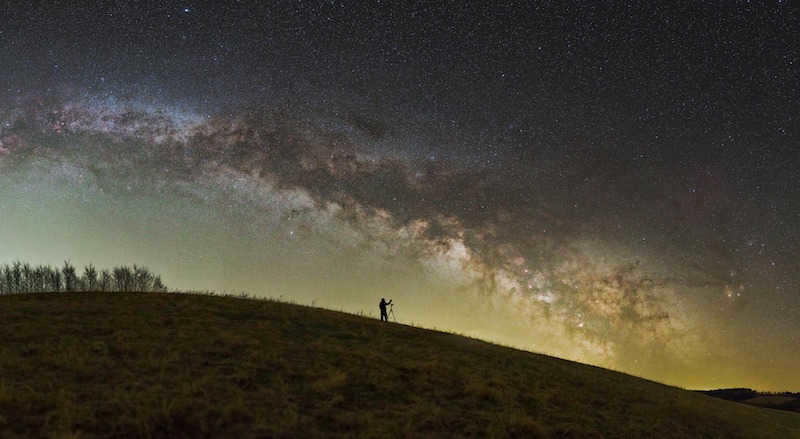
The Zselic Starry Sky Park, also known as Zselic Park, is situated in the southwest region of the nature reserve and is renowned as one of the top stargazing destinations in Europe. Visitors have the opportunity to witness the mesmerizing zodiacal light, a breathtaking phenomenon that is most visible during the spring and fall seasons. However, the park offers more than just celestial wonders. It features a planetarium that showcases informative movies, hosts lectures, and organizes guided tours of the park. Additionally, the park boasts a museum collection of meteorites and, most notably, a powerful telescope that allows visitors to observe the stars regardless of the weather conditions.
21. Galloway, Great Britain
Galloway, located in Great Britain, is a picturesque region that offers a wide range of attractions for visitors. With its stunning scenery, historic sites, and charming villages, Galloway is a must-visit destination for nature lovers and history enthusiasts alike.
One of the highlights of Galloway is its beautiful coastline, which is dotted with sandy beaches and dramatic cliffs. Visitors can enjoy leisurely walks along the shore, take a dip in the crystal-clear waters, or simply relax and soak up the sun.
Inland, Galloway is home to several nature reserves, where visitors can explore diverse ecosystems and spot a variety of wildlife. From ancient forests to rolling hills, the region’s landscapes are incredibly diverse and offer endless opportunities for outdoor activities such as hiking, cycling, and birdwatching.
History buffs will also find plenty to see and do in Galloway. The region is home to numerous historic sites, including castles, ruins, and ancient monuments. Visitors can step back in time as they explore these fascinating landmarks and learn about the rich history of the area.
Additionally, Galloway is known for its charming villages, where visitors can experience traditional Scottish culture and hospitality. From quaint cottages to friendly locals, the villages of Galloway offer a warm and welcoming atmosphere that is sure to make visitors feel at home.
Overall, Galloway is a hidden gem in Great Britain that offers something for everyone. Whether you’re seeking outdoor adventure, historical exploration, or simply a peaceful escape from the hustle and bustle of everyday life, Galloway has it all.

The Scottish Dark Sky Observatory in Scottish Park is known for its minimal use of artificial lighting and its remote location, with the nearest settlement being several tens of kilometers away. This unique combination allows the park to offer a remarkably clear night sky, revealing the presence of nearly seven thousand stars!
Within the park’s observatory, stargazers can utilize two powerful telescopes to observe natural phenomena such as the Northern Lights and an abundance of meteors. In fact, some star nebulae are even visible to the naked eye! For a more detailed view, however, it is recommended to utilize the available equipment.
If there are no scheduled events at the observatory, entrance is complimentary. Additionally, there are observation platforms, a planetarium, visitor centers, and equipment rentals for tourists. Visitors are welcome to explore the reserve independently or join a guided tour.
22. Cherry Springs, Pennsylvania, USA
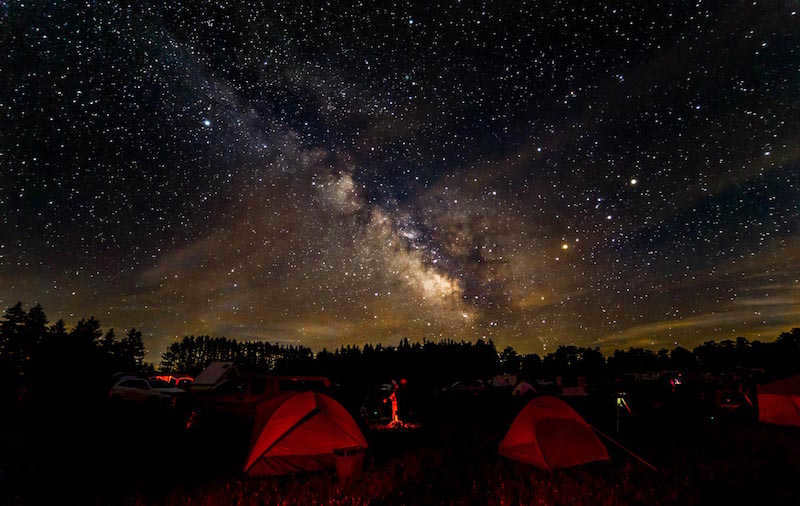
Cherry Springs National Park Authority (Cherry Springs State Park) never had the intention of transforming the park into a compelling destination for astrotourism. However, the initial astronomer ventured here independently, without any form of advertisement. There was something that drew him to the nighttime sky above Pennsylvania, and he persistently returned with his telescope until he grabbed the attention of other amateur astronomers. Subsequently, Cherry Springs rapidly gained popularity as a renowned site for stargazing and later became a member of the International Dark-Sky Association in 2009.
The park offers night tours every Friday and Saturday during the summer season, and every Saturday during the winter and fall seasons. Depending on the time of year, visitors have the opportunity to witness the constellations Sagittarius or Cassiopeia, among more than ten thousand other stars. On certain occasions, the visibility is exceptionally clear, allowing the Milky Way to cast shadows directly onto the ground – an extraordinary sight that one does not encounter on a regular basis!
23. National Monument, Utah, USA
Utah’s National Monument, located in the United States, is a breathtaking destination that attracts visitors from all over the world. The monument is known for its stunning natural beauty and unique geological formations, making it a must-visit spot for nature enthusiasts.
The National Monument in Utah offers a variety of outdoor activities for visitors to enjoy. From hiking and camping to wildlife watching and photography, there is something for everyone to enjoy. The monument also features several scenic viewpoints that offer panoramic views of the surrounding landscape.
One of the highlights of the National Monument is its famous rock formations. These towering structures have been carved by wind and water over millions of years, creating a truly awe-inspiring sight. Visitors can explore these formations up close and marvel at their intricate details.
In addition to its natural beauty, the National Monument is also home to a diverse range of plant and animal species. Visitors may encounter mule deer, bighorn sheep, and various bird species during their visit. The monument’s unique ecosystem provides a habitat for these creatures and offers visitors a chance to observe them in their natural environment.
Whether you’re an avid hiker, a photography enthusiast, or simply someone who appreciates the beauty of nature, the National Monument in Utah is a destination worth exploring. With its stunning landscapes, unique rock formations, and diverse wildlife, it offers a truly unforgettable experience for visitors of all ages.
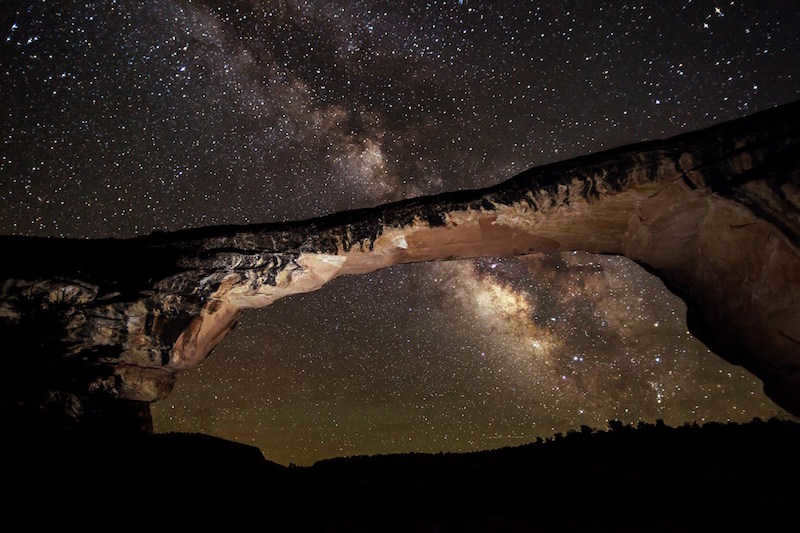
The sky above the Natural Bridges National Monument is truly one-of-a-kind. According to the DIA, there is no other place in the entire United States that offers such a dark and star-filled sky. The highlight of this location is the stunning Owachomo Sandstone Bridge, which provides a breathtaking view of millions of twinkling lights, as if you are peering through a celestial rift.
While it is possible to observe various astronomical objects with the naked eye, visitors also have the opportunity to use a powerful 16.5-inch Newton telescope. This impressive instrument allows you to gaze upon nebulae, galaxies, star clusters, planets, supernovae, and even meteorites – everything your heart desires!
Extra: Enjoying the Night Sky in the Maldives!
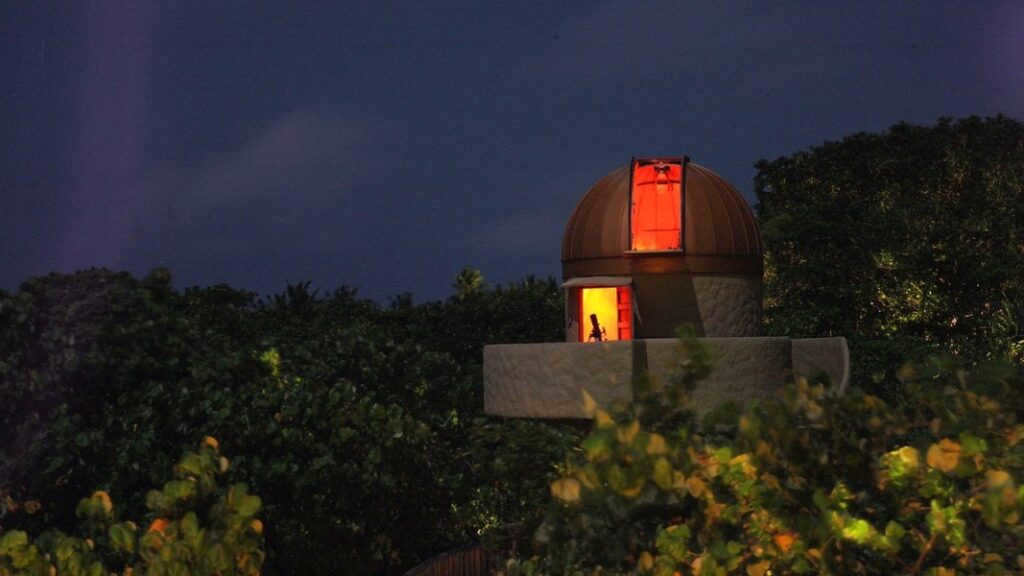
Located in Baa Atoll, the Soneva Fushi Resort boasts a unique feature – an observatory that is conveniently situated near the resort complex. This observatory is one of a kind, being the only one in the world with such close proximity to a resort.
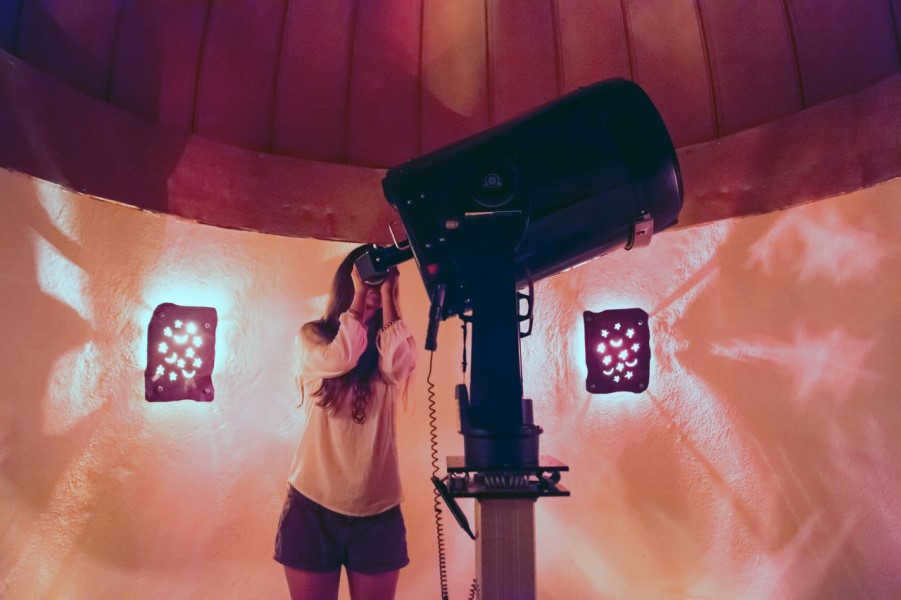
The observatory is equipped with an incredibly advanced telescope, capable of providing you with intricate visuals of the moon’s mountains and craters, Jupiter’s satellites, Saturn’s rings, and Cassini’s crevice, as well as distant galaxies and countless stars. Thanks to the Maldives’ pristine skies, free from any light or man-made pollution, the visibility promises to be absolutely breathtaking!
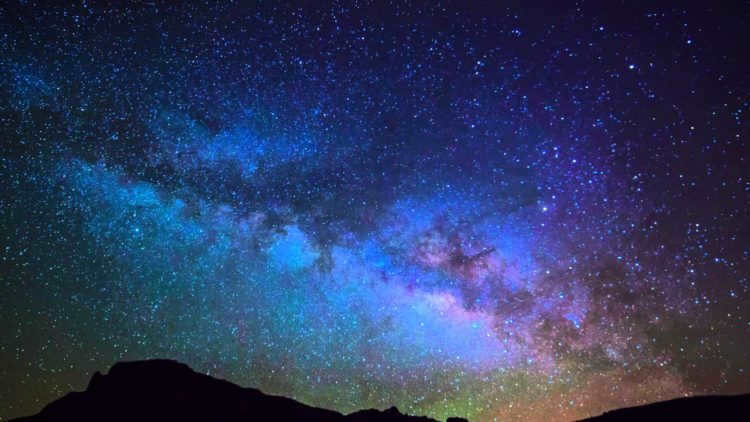
- Galaxies
The Milky Way is a galactic system that encompasses the Earth, the Solar System, and all visible stars to the naked eye. It pertains to spiral galaxies featuring a junction.
In addition to the Andromeda Galaxy (M31), the Triangle Galaxy (M33), and over 40 dwarf satellite galaxies – both its own and Andromeda’s – the Milky Way constitutes the Local Group of galaxies, which is a component of the Local Supergroup (Virgo Supergroup).
Discovery in History
Galileo’s Remarkable Findings
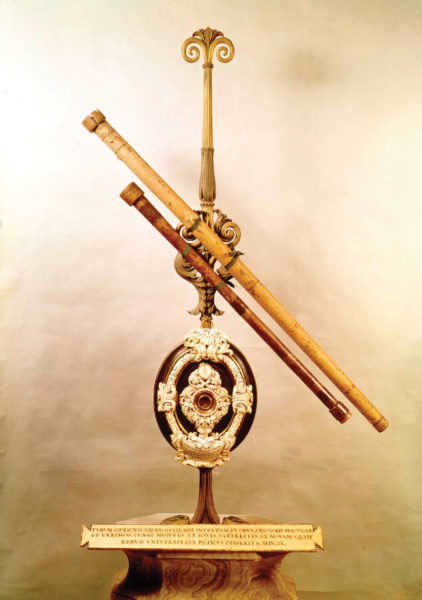
In the year 1610, the mystery of the Milky Way was finally unveiled. It was during this time that the first ever telescope was invented and utilized by the renowned scientist Galileo Galilei. Through this groundbreaking instrument, Galileo was able to observe and comprehend that the Milky Way is actually a cluster of stars, which, when seen with the naked eye, appear to merge together, forming a continuous and dimly flickering band. Additionally, Galileo was able to provide an explanation for the irregularity in the structure of this band. It turns out that besides star clusters, there are also dark clouds present within this celestial phenomenon. The combination of these two elements results in the mesmerizing image of this nocturnal wonder.
The exploration of the Milky Way extended well into the 18th century. William Herschel emerged as the most active investigator during this era. In addition to his fame as a composer and musician, Herschel also devoted himself to crafting telescopes and studying the field of astrophysics. Herschel’s most significant breakthrough was the Grand Scheme of the Cosmos. Through his observations of planets using the telescope, he meticulously tallied their presence across various regions of the celestial sphere. His research ultimately led him to the realization that the Milky Way is akin to a celestial archipelago, housing our very own Sun. Herschel even rendered his groundbreaking discovery in a schematic diagram, portraying the star system as a grindstone with a contorted, elongated form. Enclosed within this ring-shaped structure lies our Earth’s orbit. This conception of our Galaxy was universally embraced by scientists until the onset of the 20th century.
It was only in the 1920s that Jacobus Kapteyn published a work providing the most detailed description of the Milky Way. Simultaneously, the author presented a diagram of the starry island that closely resembles the one we are familiar with today. Presently, we are aware that the Milky Way is a Galaxy encompassing the Solar System, the Earth, and the individual stars that are visible to the naked eye.
What is the shape of the Milky Way?
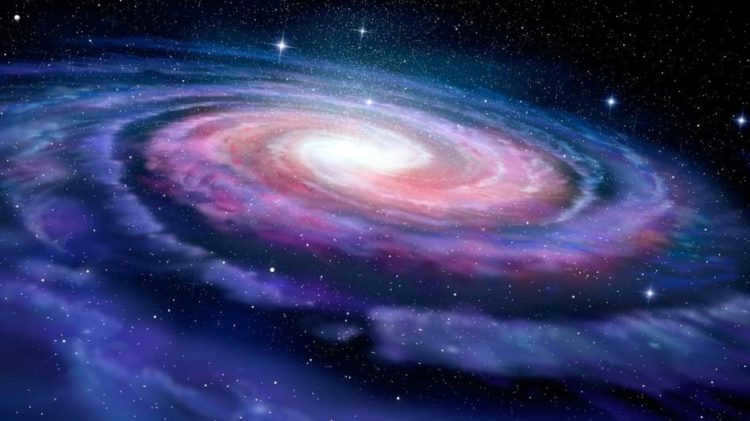
During Edwin Hubble’s examination of galaxies, he classified them based on their distinct forms of elliptical and spiral galaxies. Spiral galaxies possess a disk-like structure with spiraling arms contained within. Given the fact that the Milky Way exhibits a similar disk shape as well as spiral galaxies, it can be inferred that it is most likely a spiral galaxy.
During the 1950s, the first radio telescopes were created, leading to an exciting discovery by astronomers. They found that hydrogen atoms emit radio waves, which can pass through the dust in the Milky Way. As a result, scientists were able to observe the spiral arms of our galaxy. To accomplish this, a technique called star tagging was utilized, similar to distance measurements. Astronomers discovered that stars of spectral classes O and B were ideal for this purpose.
These stars possess several distinguishing characteristics:
- Brightness – They are highly noticeable and often found in small groups or clusters;
- Heat – They emit various wavelengths, including visible, infrared, and radio waves;
- Stars of spectral class O and B have a relatively short lifespan of approximately 100 million years. Due to the high rotation speed at the galactic center, they tend to stay close to their birthplace.
Radio telescopes allow astronomers to accurately track the positions of these stars and, by analyzing the Doppler shifts in the radio spectrum, determine their velocity. By conducting such observations on numerous stars, scientists have created combined radio and optical maps of the Milky Way’s spiral arms. Each arm is named after the constellation located within it.
Astronomers hypothesize that the motion of material around the core of the galaxy generates density waves, similar to the swirling patterns formed when mixing batter for a cake with an electric mixer. These density waves are thought to be responsible for the distinct spiral shape of the galaxy.
Consequently, by observing the sky across various wavelengths (radio, infrared, visible, ultraviolet, X-ray) using a range of telescopes located on the ground and in space, it is possible to capture different visual representations of the Milky Way.
The Doppler effect. When a car moves away, the high-pitched sound of a fire engine siren becomes lower, just like how the motion of stars affects the wavelengths of light that reach Earth from them. This phenomenon is known as the Doppler effect. By comparing the lines in a star’s spectrum to the spectrum of a standard lamp, we can measure this effect. The amount of Doppler shift indicates the speed at which a star is moving relative to us. Furthermore, the direction of the Doppler shift can reveal the direction of a star’s motion. If the star’s spectrum is shifted towards the blue end, it is moving towards us; if it is shifted towards the red side, it is moving away.
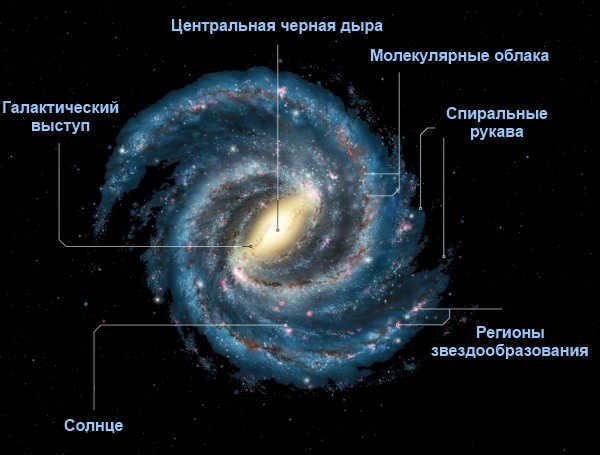
If we examine the structure of the Milky Way closely, we can observe the following:
The disk itself is divided into the following components:
- The nucleus serves as the central part of the disk;
- Arcs – the regions surrounding the nucleus, which include the immediate areas above and below the disk’s plane.
- The spiral arms extend outward from the center. Our Solar System is situated within one of the spiral arms of the Milky Way.
- Globular clusters. There are several hundred of them scattered above and below the disk’s plane.
- Halo. This is a vast, faint area that envelops the entire galaxy. The halo consists of high-temperature gas and potentially dark matter.
The size of the disk is dwarfed by the immense radius of the halo, which is said to span several hundred thousand light years. The center of the galactic disk aligns perfectly with the center of symmetry of the Milky Way halo. Comprised mostly of ancient and faint stars, the halo’s spherical component has an age surpassing 12 billion years. Referred to as the balge, the central and densest part of the halo is located within a few thousand light-years from the galactic center. The halo as a collective rotates at an incredibly sluggish pace.
When comparing the halo to the disk, it becomes evident that the disk has a much faster rotation. It can be visualized as two plates that have been folded together at their edges. The diameter of the Galaxy’s disk measures approximately 30 kpc (or 100,000 light years), with a thickness of around 1,000 light-years. The rate of rotation varies depending on the distance from the center, with speeds increasing rapidly from zero at the center to 200-240 km/s at a distance of 2,000 light-years. The mass of the disk is an astounding 150 billion times the mass of the Sun (1.99*10 30 kg). Notably, the disk is home to a concentration of young stars and star clusters, including numerous bright and hot stars. The gas within the Galaxy’s disk is distributed unevenly, forming colossal clouds. Hydrogen is the primary chemical element within our Galaxy, comprising approximately 1/4 of its composition, alongside helium.
One of the most fascinating parts of our Galaxy is situated at its core, known as the nucleus. The nucleus is positioned in the direction of the Sagittarius constellation. The visible light emitted from the galactic center is completely obscured from our view by dense layers of matter. Consequently, it was only after the development of infrared and radio receivers, which are less affected by absorption, that scientists were able to start studying it. The central regions of our Galaxy are distinguished by a high concentration of stars: there are numerous thousands of them in every cubic parsec. Moving closer to the core, one can find regions of ionized hydrogen and numerous sources of infrared radiation, indicating ongoing star formation. It is suspected that in the very heart of our Galaxy, there exists a massive compact object – a black hole weighing approximately one million times the mass of our Sun.
One of the most notable features of spiral galaxies is their spiral branches (or arms), which have given them their name. These arms contain a high concentration of young stars, scattered star clusters, and dense clouds of interstellar gas where new stars are constantly forming. Unlike the halo, which rarely shows any signs of stellar activity, the branches are still alive with the continuous exchange of matter between interstellar space and stars. However, the spiral arms of the Milky Way are mostly hidden from us due to absorbing matter. The detailed study of these arms began with the introduction of radio telescopes, which allowed scientists to observe the radio emission of interstellar hydrogen atoms along the long spiral arms. According to current theories, the spiral arms are formed by compression waves that travel through the galaxy’s disk. As these waves pass through regions of compression, the density of the disk matter increases, leading to more intense star formation. The exact reasons for the appearance of this unique wave structure in the disks of spiral galaxies are still not fully understood. Many astrophysicists are actively researching this problem.
The position of the Sun within the Milky Way galaxy
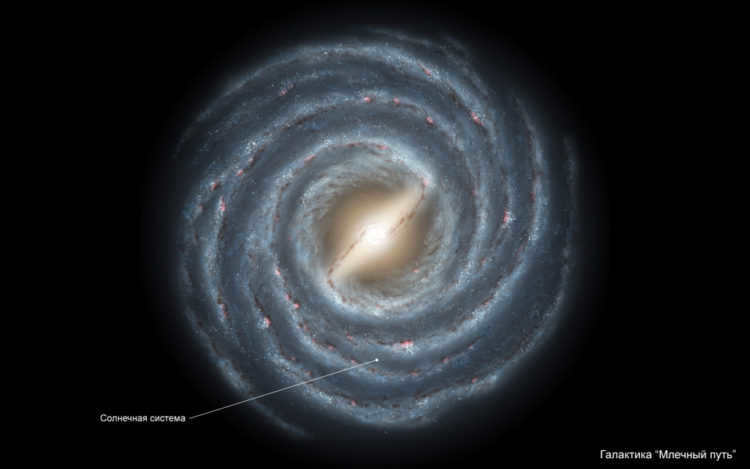
Within the vicinity of the Sun, there are observable segments of two spiral branches, which are situated approximately 3 thousand light years away from us. These segments are referred to as the Sagittarius arm and the Perseus arm, based on the constellations in which they are located. The Sun is positioned nearly equidistant between these spiral branches. However, in close proximity (in galactic terms) to us, within the Orion constellation, there exists another less distinct branch, which is considered a subsidiary arm of one of the primary spiral arms of the Galaxy.
The distance from the Sun to the center of the Galaxy is estimated to be between 23-28 thousand light years, or equivalently 7-9 thousand parsecs. This implies that the Sun is situated closer to the periphery of the galactic disk rather than its central region.
All the stars in the vicinity, including the Sun, orbit the center of the Galaxy at a velocity of 220-240 km/s, completing a full revolution approximately every 200 million years. Consequently, over the course of its existence, the Earth has completed less than 30 orbits around the Galactic center.
The velocity of the Sun’s rotation around the center of the Galaxy is practically identical to the velocity at which the compression wave, responsible for the formation of the spiral arm, moves in this particular region. This scenario is quite atypical for the Galaxy: the spiral arms rotate at a constant angular velocity, resembling the spokes of a wheel, whereas the movement of stars, as we have observed, follows a completely different pattern. As a result, nearly the entire stellar population of the disk transitions in and out of the spiral arm. The only location where the velocities of stars and spiral arms align is known as the corotational circle, and it is precisely on this circle that the Sun is positioned!
This situation is highly advantageous for the Earth. Because, within the spiral branches, intense processes occur that generate potent radiation, which can be destructive to all forms of life. Furthermore, no atmosphere would be able to shield against it. However, our planet exists in a relatively tranquil location within the Galaxy and has remained unaffected by these cosmic catastrophes for hundreds of millions and billions of years. It is possible that this is the reason why life could have originated and survived on Earth.
For a considerable period of time, the Sun’s position among the stars was regarded as ordinary. We now understand that this is not the case: it is, in a way, privileged. This fact must be taken into consideration when contemplating the potential for life in other regions of our galaxy.
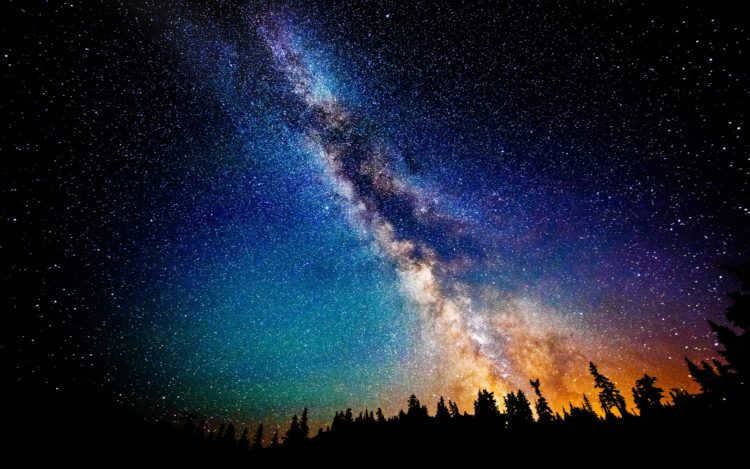
How will the demise of the Milky Way appear?
The narrative of our galaxy’s demise begins at this point in time. We might naively glance around, believing that the Milky Way, Andromeda (our elder sibling), and several other unknowns – our cosmic neighbors – constitute our home, but in actuality, there is so much more. It is now time to investigate what else exists in our surroundings. Let us proceed.
- The Triangle Galaxy. Possessing a mass approximately 5% of that of the Milky Way, it stands as the third largest galaxy in the local group. It exhibits a spiral structure, has its own satellites, and potentially serves as a companion to the Andromeda galaxy.
- The Large Magellanic Cloud. This galaxy, which is just 1% of the mass of the Milky Way, holds the distinction of being the fourth largest galaxy within our local group. Positioned less than 200,000 light-years away from our own Milky Way, it remains in a state of active star formation. The gravitational interactions between our galaxy and the Large Magellanic Cloud lead to the collapse of gas, resulting in the birth of new stars that are hotter and larger than ever before witnessed in the vast expanse of the Universe.
- Small Magellanic Cloud, NGC 3190 and NGC 6822. These three galaxies, whose sizes range between 0.1% and 0.6% of the Milky Way, are regarded as independent entities. The exact ranking of their sizes remains uncertain. Each of these galaxies boasts a mass exceeding a billion solar masses.
- The elliptical galaxies M32 and M110. While they may be considered “mere” satellites of the Andromeda galaxy, both M32 and M110 possess a staggering number of stars, each exceeding a billion in count. In fact, their mass may even surpass that of the fifth, sixth, and seventh largest galaxies.
Furthermore, there are at least 45 additional recognized galaxies – smaller ones – that compose our nearby cluster. Each possesses a dark matter halo enveloping it; each is gravitationally linked to another 3 million light-years distant. Despite their dimensions, mass, and brightness, none of them will endure in a few billion years.
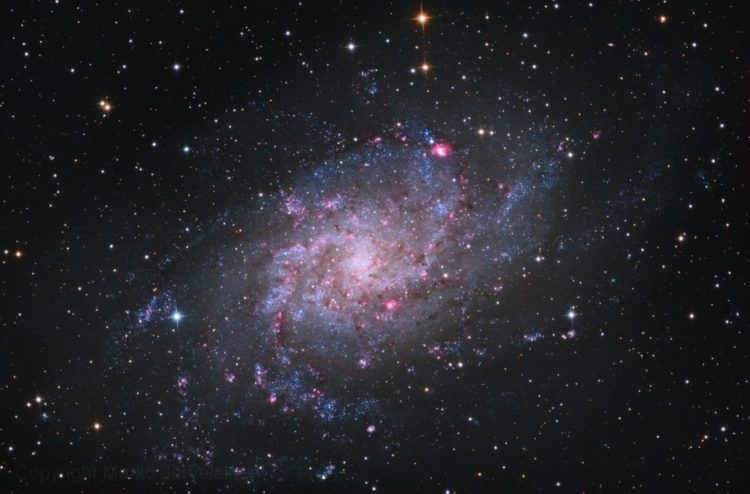
The main idea is as follows
Over time, galaxies interact with each other through the force of gravity. This interaction not only causes them to be drawn closer together, but also leads to tidal effects. When we think of tides, we often consider the Moon’s influence on Earth’s oceans, which is partially true. However, in the context of galaxies, tidal effects are a less visible phenomenon. The parts of a smaller galaxy that are located near a larger galaxy experience a stronger gravitational attraction, while the parts that are farther away experience less attraction. As a result, the smaller galaxy becomes stretched out and eventually breaks apart due to the gravitational pull.
The small galaxies within our local group, including the Magellanic clouds and dwarf elliptical galaxies, are destined to be torn apart in the same manner, resulting in their matter being assimilated into the larger galaxies they merge with. “So what,” you may ask. After all, it isn’t truly death, as the larger galaxies will continue to exist. However, even they will not endure indefinitely in this state. In approximately 4 billion years, the mutual gravitational attraction between the Milky Way and Andromeda will initiate a gravitational waltz that will culminate in a grand merger. Although this process will span billions of years, the distinctive spiral structures of both galaxies will be obliterated, giving rise to the formation of a solitary, colossal elliptical galaxy at the heart of our local group: The Mlecomedes.
Over the course of billions of years, galactic mergers will occur throughout the vast expanse of the universe. Simultaneously, dark energy will disperse these merged galaxies, pushing them to remote and unreachable corners of the cosmos. While it will take hundreds of billions of years for the last galaxies outside of our local group to vanish, the stars within them will endure. The stars that currently possess the longest lifespans will continue to consume their fuel for trillions upon trillions of years. Additionally, within each galaxy, new stars will form from the remnants of gas, dust, and deceased stellar bodies, albeit in decreasing numbers.
Once the final remnants of the stars have faded away, only the lifeless remains of white dwarfs and neutron stars will endure. These celestial corpses will continue to emit their radiant glow for hundreds of trillions or even quadrillions of years before ultimately extinguishing. When this unavoidable fate befalls us, we will be left with failed stars known as brown dwarfs, which may fortuitously collide, reigniting the process of nuclear fusion and generating starlight for tens of trillions of years.
Even after the last star ceases to exist in the distant future, there will still be residual matter present within the galaxy. Thus, it cannot be truly deemed as the definitive end.
All masses within the universe gravitationally interact with one another, and when objects of varying masses come into contact, peculiar properties are observed:
- Recurring “approaches” and close encounters result in the exchange of velocity and momentum between them.
- Objects with low mass are expelled from the galaxy, while objects with higher mass sink towards the center, losing their velocity.
- Over a sufficiently long period of time, a majority of the mass will be expelled, leaving only a small portion that remains firmly bound.
At the core of these galactic remnants, there will exist a supermassive black hole in each galaxy, with the remaining galactic objects orbiting around it, resembling a magnified version of our own solar system. Naturally, this arrangement will be the final stage, and as the black hole grows to its maximum size, it will consume everything within its reach. In the center of Mlecomeda, there will be an entity hundreds of millions of times more massive than our Sun.
However, this will eventually come to a conclusion, won’t it?

Thanks to the phenomenon of Hawking radiation, these objects will eventually decay. The timescale for this decay will be around 10,80 to 10,100 years, depending on the mass of our supermassive black hole as it continues to grow. However, the end is inevitable. Once the remnants orbiting the galactic center dissipate, only a halo of dark matter will remain. And even this dark matter can eventually dissociate, depending on its properties. Without any matter left, what we once knew as the local band, the Milky Way, and other names that held sentimental value to us, will cease to exist.
Armenian, Arabic, Wallachian, Jewish, Persian, Turkish, Kyrgyz
Per one of the Armenian legends surrounding the Milky Way, the god Vahagn, a progenitor of the Armenian people, pilfered straw from Barsham, the ancestor of the Assyrians, during a brutal winter and concealed himself in the heavens. As he traversed the sky with his loot, he inadvertently dropped pieces of straw along his path, resulting in a luminous trail in the sky known as “The Road of Straw” in Armenian. The myth of scattered straw is also referenced in the names of this phenomenon in Arabic, Hebrew, Persian, Turkish, and Kyrgyz (Kirg. samanchynynyn zholu – the way of the strawman). In Wallachia, the locals believed that Venus had stolen this straw from St. Peter.
Buryat
As per the legends of the Buryat people, it is believed that the world was created and transformed by benevolent powers. The formation of the Milky Way, for instance, is said to have occurred when Manzan Gurmeh drew milk from her breast and poured it out after being deceived by Abay Geser. Another interpretation suggests that the Milky Way is actually the “seam of the sky” stitched together after the stars spilled out from it, serving as a bridge for the Tengri to traverse.
Hungarian
Legend has it that if the sechs are in danger, Attila will come down from the Milky Way, and the sparks from their hooves will be represented by the stars. That’s why the Milky Way is known as “the road of warriors”.
Ancient Greek
The etymology of the word Galaxias (Γαλαξίας) and its connection to milk (γάλα) is uncovered through two Greek myths that bear striking similarities. One tale recounts how the milk of the mother spilled across the heavenly domain of the goddess Hera, who was nursing Heracles. When Hera discovered that the child she was breastfeeding was not her own, but rather the illegitimate son of Zeus and a mortal woman, she pushed him away, causing the milk to cascade and form the Milky Way. Another legend tells of the spilled milk belonging to Rhea, the wife of Cronus, with the infant being Zeus himself. Cronus, fearing the prophecy that he would be overthrown by his own son, devoured his offspring. Rhea, determined to save her sixth child, Zeus, devised a plan. She swaddled a stone in baby clothes and presented it to Cronus, who agreed to feed his son one last time. As Rhea nursed her child, the milk dripped onto the stone, giving rise to what would later be known as the Milky Way.
Indian
Ancient Indians believed that the Milky Way represented the flowing milk of a red cow that traveled across the sky. In the Rigveda, it is referred to as the pathway of Aryaman. According to the Bhagavata-purana, the Milky Way is believed to be the belly of a celestial dolphin.
Inca
In Inca astronomy, the dark patches of the Milky Way held great significance and were regarded as unique “constellations” in the Andean culture. These included Lama, Lama’s Child, Shepherd, Condor, Toad, Snake, and Fox. The Inca also observed various stars such as the Southern Cross, Pleiades, Lyra, and many others, which played a role in their mythology.
Ketian
The Ketian folklore tells tales of the Milky Way, which is referred to as the celestial pathway of three mythical figures. One of them is Yesya, known as the Son of Heaven, who ventured on a hunting expedition in the western part of the sky and got stranded there, frozen in time. Another character is Albe, a wealthy man who relentlessly chased after the malevolent goddess. Lastly, there’s Doha, the first shaman, who embarked on this ethereal journey to reach the Sun.
Chinese, Vietnamese, Korean, Japanese.
Asian Languages: Chinese, Vietnamese, Korean, Japanese.
Explore the Beauty of Chinese, Vietnamese, Korean, and Japanese Languages.
Discover the Richness of Chinese, Vietnamese, Korean, and Japanese Cultures Through Their Languages.
Embark on a Linguistic Journey Through Chinese, Vietnamese, Korean, and Japanese.
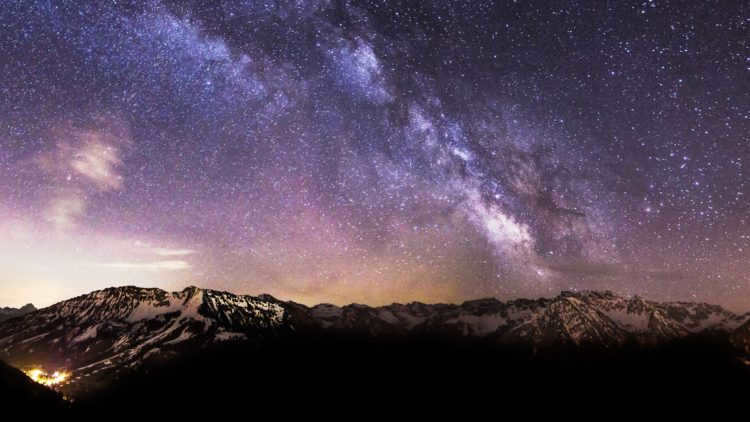
In synospheric mythologies, the Milky Way is referred to as a river and is often likened to one. The Vietnamese, Chinese, Korean, and Japanese cultures still retain the name “silver river”. Additionally, the Chinese occasionally refer to the Milky Way as the “Yellow Road” due to the color resemblance to straw.
Native American Indigenous Peoples in North America
The Hidatsa and Eskimos have a unique name for the Milky Way – they call it “Ash.” According to their myths, a girl spread ashes across the sky to help people find their way home at night. The Cheyenne people, on the other hand, believed that the Milky Way was made up of mud and silt that was lifted by a turtle swimming across the sky. The Eskimos living near the Bering Strait had a different belief – they thought that the Milky Way consisted of footprints left by a Raven Creator as he walked across the sky. The Cherokee people had their own myth about the Milky Way, which involved a jealous hunter stealing another hunter’s wife. In this story, the stolen wife’s dog started eating unattended cornmeal and scattered it across the sky, forming the Milky Way. Interestingly, a similar myth can be found among the Koisan people of the Kalahari. Another myth from the same group of people suggests that the Milky Way is actually the trail left by a dog dragging something across the sky. The Ktunaha people referred to the Milky Way as the “dog’s tail,” while the Blackfeet called it the “wolf’s road.” The Wayandot people had a unique belief that the Milky Way was a place where the souls of dead men and dogs would come together to dance.
In Maori mythology, the boat Tama-reti represents the Milky Way. The constellation Orion and Scorpius form the bow of the boat, while the Southern Cross, Alpha Centauri, and Hadar serve as the anchor and rope. According to the legend, Tama-reti found himself sailing his canoe late one day, far from home. With no stars in the sky and fearing an attack from Tanifa, Tama-reti began tossing sparkling pebbles into the heavens. The celestial deity Ranginui was pleased with Tama-reti’s actions and immortalized his boat in the sky, transforming the pebbles into stars.
Finnish, Lithuanian, Estonian, Erzian, Kazakh
The Finnish designation is Fin. Linnunrata signifies “The Path of the Avians”; the Lithuanian designation has a comparable etymology. The Estonian legend also associates the Milky Way with avian journey.
The Erzyan designation is “Kargon Ki” (“Crane Road”).
The Kazakh designation is “Kus zholy” (“The Path of Birds”).
Fascinating details about our Milky Way galaxy
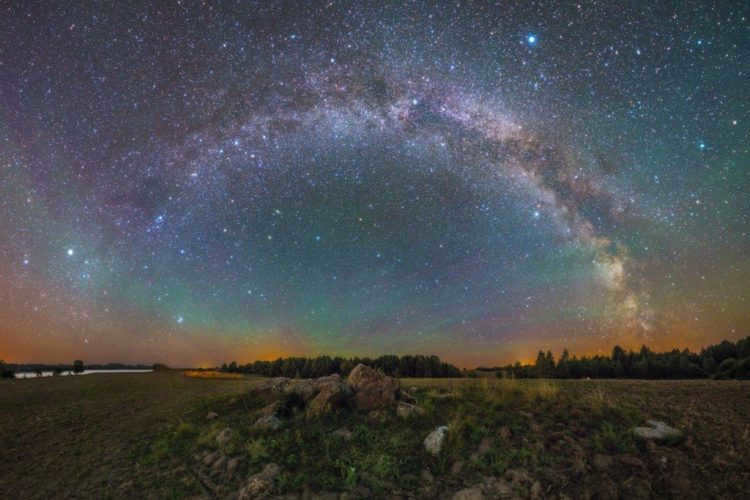
- The formation of the Milky Way began as a result of the clustering of dense regions after the occurrence of the Big Bang. The initial appearance of stars took place within globular clusters, which still exist today. These clusters contain the oldest stars found in our galaxy;
- Over time, the Milky Way has expanded its size by absorbing and merging with other galaxies. Currently, it is acquiring stars from the Sagittarius Dwarf Galaxy and the Magellanic Clouds;
- The Milky Way is constantly in motion through space, moving at a speed of 550 kilometers per second relative to relic radiation;
- At the center of our galaxy, there is a supermassive black hole known as Sagittarius A*. It has a mass 4.3 million times greater than that of the Sun;
- The center of the Milky Way is surrounded by gas, dust, and stars that orbit at a speed of 220 km/s. This steady rate suggests the presence of a dark matter halo;
- In 5 billion years, there will be a predicted collision between our galaxy and the Andromeda galaxy.
Video
Typically, the optimal time to observe the Milky Way is during the Milky Way season, which spans from February to October. This timeframe usually falls between 00:00 and 5:00 and on nights when the moon is not visible. However, the specific timing can vary depending on factors such as the hemisphere, latitude, and the phase of the moon.
Where can you find the Milky Way in the night sky? When observed from Earth, the visible region of the Milky Way’s galactic plane encompasses 30 constellations. The galactic center is situated in the direction of Sagittarius, which is where the Milky Way appears brightest.
Typically, the optimal time to observe the dense section of the Milky Way is when it reaches its highest point in the southern sky. For optimal viewing, it is recommended to face south during the months of April and May in the early morning hours. From June to early August, the best time to observe is around midnight, although the Milky Way can be seen throughout the entire night.
What is the ideal time to witness the Milky Way firsthand?
The most awe-inspiring part of our galaxy, which lies in the same direction as the Sagittarius constellation, can be observed annually in early March before sunrise. It also appears prominently in the sky during the months of July and August.
Is it possible to catch a glimpse of the Milky Way galaxy on a nightly basis?
Recommended reading:
The view of the Milky Way used to be accessible to everyone on clear, moonless nights across the globe. However, in modern times, light pollution caused by the constant use of artificial lights throughout the night has made it impossible for most people to witness this spectacular sight.
Is it possible to observe the Milky Way at this moment?
Regardless of your location, you can observe the Milky Way at any time of the year. As long as the sky is clear and there is minimal light pollution, the Milky Way will be visible. It’s worth noting that the Milky Way appears to move across the sky due to the rotation of the Earth.
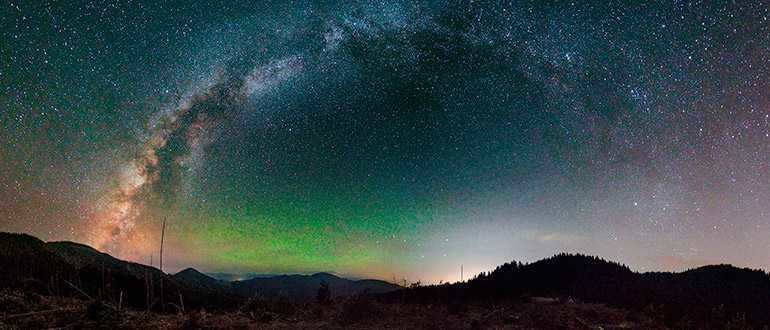
⚡ Testimonials
Hello there, inquisitive adventurers. There must be a purpose behind stumbling upon this piece if you have an interest in astrology. It’s a fascinating field that continues to evolve and uncover new frontiers and discoveries.
In this piece, we will delve into the phenomenon of the Milky Way. What exactly is it? How does it manifest in our universe? Get ready to discover some mind-blowing facts about the awe-inspiring wonders of nature.
Definition
The Milky Way is a vast collection of stars, planets, asteroids, and the sun. It encompasses not only celestial bodies, but also includes you and me. Astronomers are deeply intrigued by this enigmatic entity and are tirelessly studying its every aspect. What are the distinctive characteristics of this wondrous phenomenon?
Imagine, a galaxy has the power to attract and absorb smaller ones. Even constellations that are in close proximity to the Milky Way eventually find themselves drawn into its gravitational embrace. This process occurs gradually, as the constellations first come under its influence and then become integrated into the vastness of this cosmic marvel.
Interestingly, at this very moment, a small galaxy is being pulled into the Milky Way, soon to merge and become one with it. However, this interaction with smaller galaxies cannot last indefinitely. There is a possibility that a larger cosmic entity may come into contact with our Milky Way, resulting in its ultimate consumption.
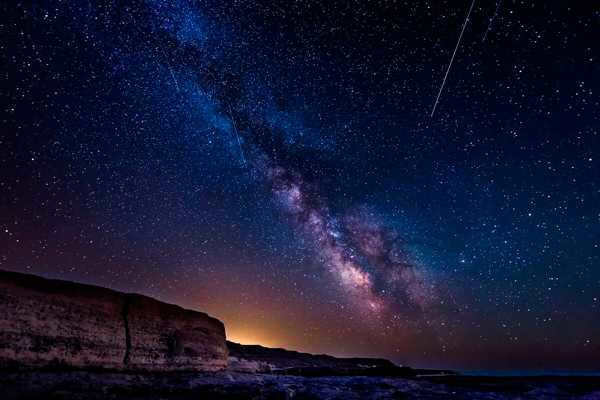
What is it
With the emergence of advanced technologies, researchers have undertaken extensive studies of the galaxy, enabling us to acquire a wealth of knowledge about it. At the heart of the Milky Way lies the core, which is comprised of numerous stars. Some scientists speculate that a black hole resides at the center, although our understanding of it remains limited.
Extending through the core is a bridge. The Milky Way itself is composed of gas, dust, and stars that are visible in the night sky, as well as our own solar system.
As previously mentioned, the Milky Way is influenced by the nearby dwarf galaxies that orbit around it. When observed from a side view, we perceive a rather flat appearance, which is a result of the spiral arms rotating around the disk.
Size
There is no precise definition of the size of the Milky Way, as it is truly immense. There has been much debate among astronomers and experts on this subject. Initially, a size of 100,000 thousand light years in diameter and 1000 light years in width was determined.
However, with the advancement of new technologies, measuring instruments, and scientific improvements, another measurement of the galaxy was conducted. This occurred a few years ago, and scientists concluded that the galaxy could be much larger than the initial estimate of 100,000 thousand light years, possibly even twice as big.
In the past few years, science has made even further advancements, and as of the present year 2020, another measurement of the galaxy has been made. While these figures have not been fully confirmed, the study’s results suggest that the galaxy may have a diameter of 1,900,000 light years.
And you can only fathom the immensity of it. The sheer magnitude of a single galaxy is mind-boggling. Now, gaze at the night sky. Can you tally up the number of stars you see? It’s difficult to discern, as the entire expanse is teeming with them.
Estimating the total number of stars in the entire galaxy is just as challenging. However, the figures are in, and it’s a whopping 400 billion stars.
But that’s not all, as there are also brown dwarfs. Unfortunately, they are so diminutive that their luminosity falls short of classifying them as stars. Nonetheless, they still make up a significant quantity, ranging from 25 to 110 billion.
The Milky Way’s Disk
In order to gain a comprehensive understanding of the disk component of the Milky Way galaxy, researchers are continuously advancing their technological capabilities. However, some information about this cosmic structure has already been revealed.
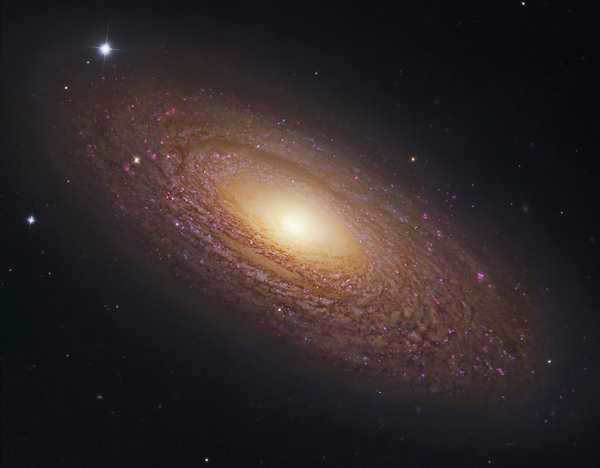
Lyman Spitzer and his telescope demonstrated in 2005 that the Milky Way is categorized as a spiral galaxy. Within the flat disk, there is a predominance of youthful stars. As one ventures further, older stars become visible.
Let us examine the nucleus more closely. It is hypothesized by scientists that it is comprised of an unexplored black hole. Surrounding the black hole are stars that emit radiance, causing the black hole to shine. This is the source of the luminous brilliance emanating from the core. Following the core is the jumper.
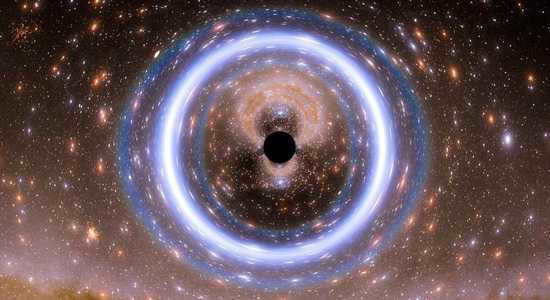
It is not merely an empty void, but rather a location where the crimson stars reside. These stars are incredibly ancient, having existed for billions of years, and as a result, they emit only a minuscule amount of light. Relatively recently, scientists made an astounding discovery: a new black hole located 200 light years away from the previous one.
Furthermore, they subsequently identified an additional 12 systems that could potentially harbor black holes. Regrettably, these objects have not been thoroughly investigated, leaving us to speculate and ponder their mysteries.
Halo
A halo, also known as a spherical formation that surrounds the disk of the Milky Way, is primarily composed of ancient stars and clusters that have existed for thousands of years.
Researchers have recently put forth the hypothesis that the Halo originated approximately 12 billion years in the past. This theory is based on extensive analysis of various extremely aged entities within the Halo.
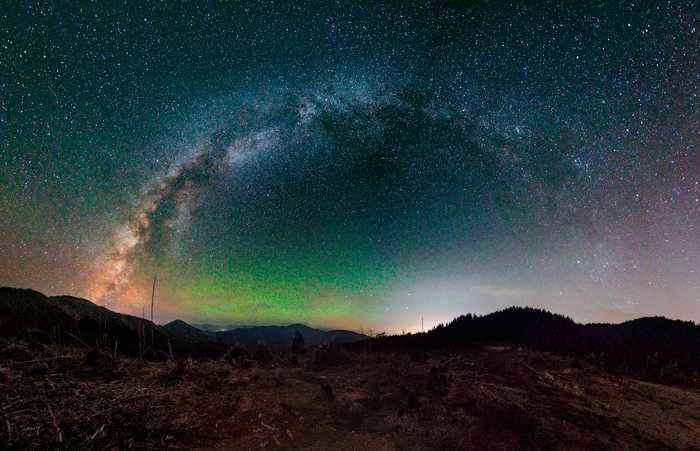
In addition, every object within the halo is in orbit. This is a result of the disk’s impact on the halo. The halo is recognized as a completely developed formation. There are no new stars forming here due to the absence of necessary conditions. Unlike the disk, which contains dust and gases that contribute to the creation of new stars, the halo lacks these elements.
A short time ago, researchers embarked on a mission to determine the location of the Milky Way, our galaxy, as well as our own place within it. It was discovered that our galaxy is a component of a larger region known as Laniacea.
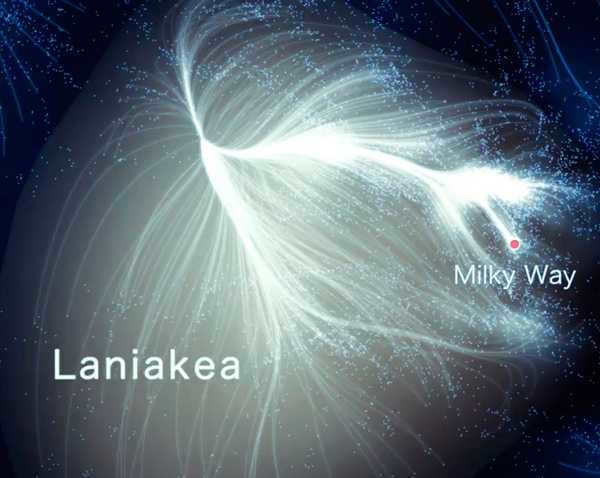
This particular section of space contains numerous assemblages of galaxies spread across a vast expanse, although it is not the largest in the cosmos. There exist more expansive regions, but it is Laniakea that possesses the greatest mass. Naturally, researchers are encountering difficulties in investigating the movement within Laniakea. Nevertheless, it is currently believed that our Milky Way extends deeply into all of these assemblages.
Undoubtedly, the Milky Way is an extraordinary entity. It boasts an incomprehensible size and remarkable characteristics. Scholars and educators have only just begun to explore this phenomenon, within which lies life itself, encompassing you and me.
To uncover the hidden secrets of the Milky Way and our galaxy, one must gather a wealth of knowledge, embrace new technologies, and possess an insatiable thirst for understanding our world.
It will take many more decades for scientists to unravel the intricacies of how everything operates, the direction of change, and the movement within. Can a single individual alter the trajectory of an entire galaxy? Or are we destined to merely observe and marvel?
Astronomy, an incredible scientific field, beckons exploration and admiration. It holds a wealth of information… Information that should not only be accessible to adults, but to children as well. I believe there is undoubtedly an interest in this subject.
Final thoughts.
We sincerely hope that you found our article to be valuable and informative. We have worked diligently to provide you with a wealth of important information about our galaxy and the world we inhabit. Summarizing everything in a concise manner is impossible, but through reading this article, you have undoubtedly gained a wealth of new knowledge.
Personally, I found the process of uncovering new information to be incredibly fascinating, and I am eager to hear your thoughts. If you enjoyed this article, consider subscribing to our blog, where you will discover even more intriguing and practical insights.
Remember to share this article with your friends and acquaintances so that they can also benefit from the valuable knowledge it imparts. With that, we bid you farewell and wish you all the best in your endeavors.
Related Articles:
No Comments/ 13086
In the vast expanse of the universe lies our home, the Milky Way galaxy. Within its cosmic boundaries, our planet Earth is but a minuscule speck. As we continue to populate our website, there are moments that seem to have been overlooked, forgotten, or simply set aside. Today, we aim to fill one of those gaps. Our focus today centers around the captivating Milky Way galaxy.
Once upon a time, humanity believed that the Earth was the center of the universe. As time went on, this viewpoint was proven false, and the Sun took its place as the center of all things. However, it was soon discovered that this life-giving celestial body is not the heart of the cosmos, but rather a tiny grain of sand floating amidst an infinite sea of stars.
The visible expanse of the universe contains countless stars. All of them come together in a massive stellar system, known for its exquisite beauty and captivating charm – the Milky Way Galaxy. From our vantage point on Earth, this celestial splendor presents itself as a broad, ethereal strip, softly glowing against the cosmic backdrop.
Spanning across the entirety of the northern hemisphere, it traverses through constellations such as Gemini, Ascendant, Cassiopeia, Fox, Swan, Taurus, Eagle, Arrow, and Cepheus. Encircling the southern hemisphere, it journeys through constellations like Unicorn, Southern Cross, Southern Triangle, Scorpio, Sagittarius, Sails, and Circulus.
If you equip yourself with a telescope and gaze into the night sky, the view will be transformed. The wide whitish band will transform into an infinite multitude of radiant stars. Their faint, distant beckoning light will convey the grandeur and immensity of the cosmos silently, leaving you breathless and awakening an understanding of the insignificance and triviality of human troubles in the grand scheme of things.
The Milky Way is referred to as a galaxy or a colossal star system. According to current estimations, it is believed that there are approximately 400 billion stars within the Milky Way. All of these stars orbit in closed paths. They are gravitationally bound to one another, and the majority of them have their own planetary systems. Stars and planets combine to create stellar systems. These systems can be single stars (like our Solar System), double stars (such as Sirius, which consists of two stars), triple stars (like Alpha Centauri), and even systems with four, five, or even seven stars.
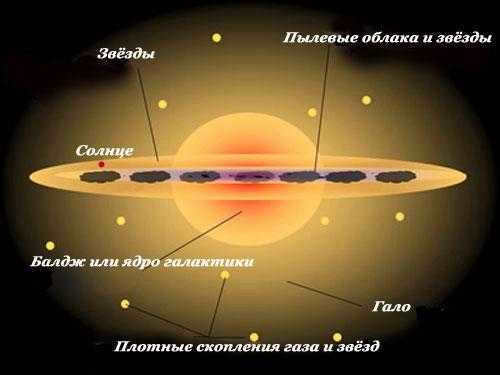
The Milky Way is shaped like a disk.
The composition of the Milky Way
All of the countless star systems that make up the Milky Way are not randomly scattered throughout space, but instead come together to form a massive disk with a bulge in the center. The diameter of this disk is 100,000 light-years, which is equivalent to a distance of about 10¹⁹ km. In parsecs, the diameter is 30,659 (one parsec is equivalent to 3.2616 light-years). The disk is several thousand light-years thick and has a mass that is 3×10¹² times greater than the mass of the Sun.
The mass of the Milky Way consists of stars, interstellar gas, dust clouds, and the halo, resembling a massive sphere composed of rarefied hot gas, stars, and dark matter. Dark matter refers to a collection of hypothetical cosmic entities that make up 95% of the entire Universe’s mass. These enigmatic entities remain invisible and unresponsive to modern detection techniques.
The presence of dark matter can only be inferred through its gravitational influence on visible star clusters. Unfortunately, the number of observable clusters is limited. Even with the most advanced telescope, the human eye can only perceive around two billion stars. The remaining cosmic expanse remains concealed by vast, impenetrable clouds of interstellar dust and gas.
The region in the middle of the Milky Way’s disk known as the Galactic center or nucleus is experiencing a thickening. Within this area, there are billions of ancient stars that follow highly elongated orbits. The total mass of these stars is estimated to be a staggering 10 billion times that of our Sun. Although the core’s size may not be particularly impressive, spanning 8,000 parsecs, the Galactic center is a sight to behold.
If humans were able to observe the Galactic nucleus in the sky, they would witness a radiant orb. This luminous ellipsoid would appear a hundred times larger than the Moon, creating a truly magnificent spectacle. Unfortunately, the view of this breathtaking phenomenon is obstructed from Earth due to the presence of dense gas and dust clouds.
Located 3000 parsecs away from the Galactic center, there exists a gas ring spanning 1500 parsecs and boasting a weight of 100 million solar masses. This is the presumed site of the central region where new stars are formed. Extending outwards from this location are gas arms that stretch for approximately 4000 parsecs. Situated right at the heart of the core is a massive black hole that outweighs three million suns.
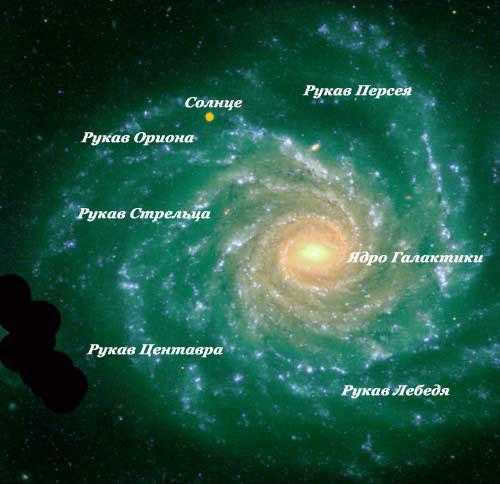
The spiral arms of the Milky Way
The galactic disk is not uniform in its composition. It consists of distinct regions with high density, known as spiral arms. Within these arms, the continuous process of star formation takes place, and the arms themselves extend along the nucleus, curving in a semicircular fashion. Currently, there are five such arms: the Swan arm, the Perseus arm, the Centauri arm, the Sagittarius arm, and the arm of Orion, which is where our solar system is located.
It is worth noting that this spiral structure is becoming increasingly evident to people. It comes as a surprise to many, but even the trajectory of our Earth follows a spiral pattern!
Located 28,000 light years away from the galactic core, the Sun and its planets are carried at a speed of 220 km/s around the center of the Galaxy. It takes 220 million years for a full turn to be completed. However, there is another interesting number – 250 million years.
The solar system is positioned just below the galactic equator and its orbit is not smooth and steady, but rather bouncy. Every 33 million years, it crosses the galactic equator and rises 230 light-years above it. Then, it falls back down only to repeat its ascent after another interval of 33 million years.
The galactic disk is in a state of rotation, but it does not rotate as a singular entity. The core spins at a faster rate, while the spiral arms within the disk’s plane spin at a slower pace. This naturally raises the question: why do the spiral arms not wrap around the galactic center and instead maintain their shape and arrangement for a duration of 12 billion years (the estimated age of the Milky Way)?
There exists a theory that provides a plausible explanation for this phenomenon. It suggests that the spiral arms are not physical objects, but rather waves of matter density that emerge against the backdrop of the galaxy. This is a result of star formation and the birth of highly luminous stars. In essence, the rotation of the spiral arms is unrelated to the movement of stars along their galactic orbits.
The latter, however, traverse the arms either in front of them at high speed, if they are closer to the center of the Galaxy, or trailing behind, if they are situated in the outer regions of the Milky Way. These spiral waves are formed by the brightest stars, which have a relatively short lifespan and manage to exist within the arms.
As evident from the aforementioned information, the Milky Way is an extremely intricate celestial formation that extends beyond the surface of its disk. It is encompassed by a massive spherical cloud (known as the halo). This halo is composed of various components, including rarefied hot gases, individual stars, globular star clusters, dwarf galaxies, and dark matter. Moreover, the outskirts of the Milky Way contain dense gas clouds that span several thousand light years, have temperatures soaring to 10,000 degrees Celsius, and possess masses equivalent to at least ten million suns.
Close Proximity of the Milky Way Galaxy’s Neighbors
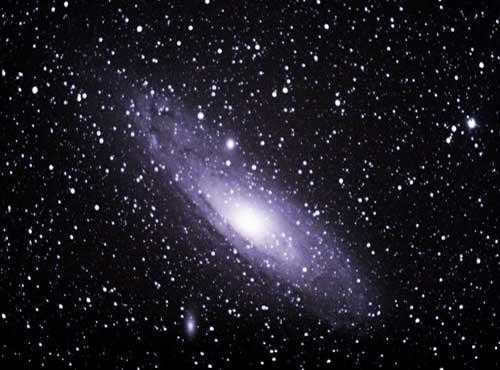
Within the vast expanse of the Universe, the Milky Way is not the only celestial entity. Positioned 772 thousand parsecs away, exists an even more colossal stellar structure. This astronomical wonder goes by the name of the Andromeda Galaxy (or, more poetically, the Andromeda Nebula). It has been recognized since ancient times as “a diminutive celestial cloud, easily discernible amid the obscurity of night”. As far back as the early 17th century, astronomers with a religious inclination believed that “at this particular location, the crystalline barrier separating dimensions is thinner than usual, allowing the radiance of the heavenly realm to permeate through”.
The Andromeda Nebula is the sole galaxy visible to the naked eye in the night sky. It appears as a compact, luminous oval shape. The brightness within the nebula is not evenly distributed, with the central region shining more intensely. When observed through a telescope, this spot transforms into a colossal stellar system, spanning a diameter of 150,000 light years. This vast expanse is 1.5 times larger than the Milky Way galaxy.
However, it is not only the size that sets Andromeda apart from the galaxy housing our solar system. As early as 1991, the Hubble Space Telescope’s planetary camera detected the presence of two nuclei within Andromeda. One nucleus is smaller in size and orbits around the other, which is larger and brighter. Over time, the gravitational forces from the larger nucleus cause the smaller one to gradually collapse. This slow demise of one of the nuclei suggests that it is a remnant of a different galaxy that was assimilated by Andromeda.
It may come as an unpleasant surprise to many that the Milky Way is being approached by the Andromeda Nebula, ultimately moving towards the Solar System. The pace of this approach is estimated to be around 140 kilometers per second. Consequently, the encounter between these two colossal celestial bodies is projected to occur in approximately 2.5-3 billion years. This won’t be a rendezvous on Elba, but it certainly won’t result in a cosmic catastrophe of global proportions..
The two galaxies will simply amalgamate into one. However, the question of which galaxy will dominate leans in favor of Andromeda. It possesses a greater mass and has already assimilated other galactic systems in the past.
As for the fate of the solar system, predictions differ. The most pessimistic scenario suggests that the Sun and all its planets will be flung into intergalactic space, with no place in the new formation to call home.
However, perhaps it is advantageous. In the end, we witness the Andromeda Galaxy’s insatiable appetite for consuming its own kind. By engulfing the Milky Way and obliterating its core, the Nebula will transform into an immense entity and continue its cosmic odyssey, feasting upon an increasing number of galaxies. The ultimate consequence of this voyage will be the implosion of an immensely bloated, super colossal stellar system.
The Andromeda Nebula will disintegrate into innumerable diminutive celestial formations, mirroring the destiny of vast empires of human civilization, which initially flourished to unparalleled proportions, only to crumble with a resounding crash, incapable of withstanding the burden of their insatiable avarice, self-interest, and thirst for power.
However, it is not advisable to occupy our minds with the forthcoming tragedies. It is preferable to contemplate a different galaxy known as the Triangle Galaxy. Situated in the vast expanse of the Universe, it is located at a distance of 730 thousand parsecs from the Milky Way. In terms of size, it is double the size of the Milky Way, while its mass is a mere seven times lighter. In essence, it is an ordinary galaxy of medium size, which is quite common in the cosmos.
All three of these star systems, along with several dozen other dwarf galaxies, are part of what is referred to as the Local Group, which is a constituent of the Virgo Supergroup. The Virgo Supergroup, in turn, is an immense star formation spanning 200 million light years.
The clusters of old stars and gas rings in these galaxies also exhibit a similar structure to the nuclei, where new stars are formed. A consistent characteristic found in the central region of each nucleus is the presence of an extremely massive black hole. As previously mentioned, the black hole in the Milky Way has a mass equivalent to over three million times that of the sun.
Black holes represent one of the most enigmatic phenomena in the vast expanse of the Universe. While they are observed and studied, these mysterious entities remain reluctant to divulge their secrets. It is understood that black holes possess an incredibly high density, and their gravitational pull is so intense that even light cannot escape their grasp.
However, should any celestial entity happen to find itself within the sphere of influence of one of these immense forces (known as the event horizon), it will be promptly consumed by this formidable cosmic behemoth. The ultimate fate of the hapless victim remains a mystery. In short, entering a black hole is a simple feat, yet escaping its grasp is an impossible task.
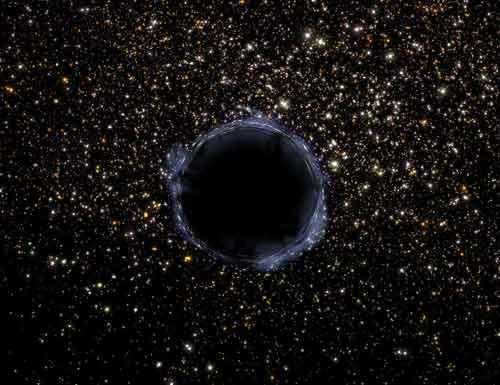
Astronomers have discovered numerous black holes scattered throughout the vastness of the universe, with some of them possessing a mass that far exceeds the black hole located at the center of the Milky Way. However, this does not imply that the black hole native to our solar system is any less dangerous than its larger counterparts. It too is insatiable and bloodthirsty, serving as a compact (with a diameter equivalent to 12.5 light hours) and potent source of X-rays.
The enigmatic entity known as Sagittarius A. has been identified as having a mass exceeding 3 million times that of the Sun, with its event horizon measuring at 68 astronomical units (1 a.e. being the average Earth-Sun distance). It is within this range that its voracity and treachery towards various celestial bodies becomes evident, as they often unknowingly traverse its boundary.
Some may mistakenly believe that this formidable being is satisfied with random victims. However, it actually possesses a constant source of sustenance in the form of the star S2. S2 orbits the black hole in an incredibly compact trajectory, completing a full revolution every 15.6 years. The farthest distance between S2 and the fearsome monstrosity is a mere 5 light days, while the closest proximity is a mere 17 light hours.
As a result of the gravitational pull exerted by the black hole, a portion of the doomed star’s matter is forcibly ripped away and propelled at high velocities towards the monstrous cosmic entity. Upon nearing the black hole, the matter undergoes a transformation, transitioning into a scorching state of plasma, before emitting a final radiant glow and vanishing forever into the insatiable abyss.
However, the nefariousness of the black hole knows no bounds. In close proximity to it exists another, smaller and less dense black hole. Its purpose is to redirect stars, planets, interstellar dust, and gas clouds towards its more formidable counterpart. All of this matter also undergoes a conversion into plasma, emits a brilliant luminosity, and ultimately dissipates into oblivion.
This model attempts to encompass the entire universe, offering an explanation for its expansion. Advocates of this theory propose that outer space is akin to a colossal bubble, continuously expanding due to an unknown force. Essentially, the entire cosmos functions as a massive gravastor, within which smaller gravastor models coexist and periodically absorb individual stars and other celestial formations.
When absorbed, these entities are seemingly propelled into other cosmic realms, which remain mostly imperceptible as they do not emit any light from beneath their pitch-black shells. Could these gravastors represent alternate dimensions or parallel worlds? The definitive answer to this question may elude us for an extensive period of time.
However, the presence or absence of black holes is not the sole focus of space researchers. Far more captivating and thought-provoking are contemplations about the potential existence of intelligent life in other star systems throughout the vast expanse of the Universe.
The Sun, which provides life for people on Earth, orbits among numerous other stars within the Milky Way. When observed from our planet, its disk appears as a faintly glowing band encircling the sky. These stars are located billions and billions of light-years away, and many of them have their own systems of planets. Could there be at least one of these planets that harbors intelligent life – beings similar to us?
It seems most logical to assume that life resembling that on Earth could potentially exist on a planet orbiting a star of the same type as our Sun. Such a star does exist in our night sky, and it happens to be part of the closest star system to our own. This star is called Alpha Centauri A, and it is located in the constellation Centauri. Alpha Centauri A is visible to the naked eye from Earth, and its distance from the Sun is approximately 4.36 light-years.
Having intelligent neighbors living right next door would be a wonderful thing. However, it is important to acknowledge that wishful thinking does not always align with reality. In the pursuit of discovering signs of extraterrestrial civilization, even within a distance of approximately 4-6 light years, the task is immensely challenging given the current state of technological advancements. Hence, it would be premature to speculate about the existence of any form of intelligence within the Centauri constellation.
In the present day, it is now feasible to transmit radio signals out into the vast expanse of space, with the hope that an unidentified recipient will answer the call of human intellect. Since the early 1900s, the world’s most powerful radio stations have been ceaselessly and unwaveringly involved in such endeavors. As a result, the level of radio emissions from Earth has dramatically risen. Thus, our planet has become distinctively unique in terms of its radiation levels when compared to all the other celestial bodies within the Solar System.
Signals originating from Earth extend across a vast expanse spanning at least 90 light years. In the grand scheme of the cosmos, this may seem insignificant, but as we are aware, even the tiniest speck can have a profound impact. Should there exist highly advanced extraterrestrial civilizations in the far reaches of the universe, it is inevitable that they will eventually take notice of the heightened levels of radiation emanating from the depths of the Milky Way galaxy, along with the radio signals emanating from our planet. Such a fascinating phenomenon is sure to captivate the inquisitive minds of these alien beings.
Consequently, a proactive quest for extraterrestrial signals is established. However, the enigmatic void remains unresponsive, implying that there is a dearth of sentient beings or their technological advancement within the Milky Way is rudimentary. This veracity prompts an alternative conjecture, positing the existence of an advanced civilization or civilizations that dispatches alternative signals beyond the reach of Earth’s technological apparatus.
Advancements are constantly being made on our planet, and there are ongoing developments in the field of transmitting information over long distances. These new methods being explored by scientists have the potential to have a positive impact. However, it is important to keep in mind the vastness of the Universe. There are stars whose light takes billions of years to reach Earth. When observing such cosmic objects through a telescope, we are essentially looking into the distant past.
It is possible that signals received from outer space could be remnants of a long-extinct extraterrestrial civilization that existed before the formation of our Solar System or even the Milky Way. If we were to send a response back to these aliens, it would be received by beings who were not even part of the original project when it was initially sent.
Well, it is essential to consider the laws of the unforgiving reality. Nevertheless, the pursuit of intelligence in far-off galactic worlds must persist. If the current generations are unfortunate, the future generations will be fortunate. In this scenario, hope will never perish, and determination and perseverance will undoubtedly yield immense rewards.
However, the exploration of galactic space is genuinely attainable and imminent. In the upcoming century, swift and graceful spacecraft will journey to the closest constellations. The astronauts aboard these vessels will gaze out through the windows, not at planet Earth, but at the entire solar system. They will perceive it as a distant, luminous star. Nevertheless, it will not be the frigid, lifeless brilliance of one of the countless suns within the Galaxy, but the familiar radiance of the Sun, around which, unseen, the soul-warming dust of Mother Earth will orbit.





